

Rural Research and Development Corporations
Australia’s Rural Research and Development Corporations (RDCs) have helped drive agricultural innovation since 1989. They allow Australian government and primary producers to co-invest in research and development (R&D). This benefits industry and regional communities.
There are 15 RDCs:
- 5 Commonwealth statutory bodies
- 10 industry-owned companies (IOCs).
All RDCs manage R&D services. Most IOCs also provide other industry services, mainly marketing. Following legislative amendments in 2013, statutory RDCs are also able to undertake marketing activities at the request of industry, where supported by a statutory marketing levy.
Statutory RDCs
Commonwealth statutory RDCs are Australian Government entities with a board of directors appointed by the Minister for Agriculture, based on recommendations from a selection committee.
Commonwealth statutory RDCs, their enabling legislation and declared representative organisation(s) are below:
Industry-owned companies
Industry-owned research and development companies are independent corporate entities with expertise-based boards. Industry-owned RDCs and their enabling legislation are below:
Government priorities for investment
RDCs help drive agricultural innovation. They allow Australian government and primary producers to co-invest in R&D to improve the profitability, productivity, competitiveness and long-term sustainability of Australia's primary industries. These include agricultural, fishing and forestry industries. Both industry and government recognise that creating and meeting demand for Australian produce is essential to the competitiveness and profitability of our primary industries and provides benefits for the whole Australian community. The government-industry partnership model that supports the RDCs has been operating successfully for over 30 years.
On 11 October 2021, the National Agricultural Innovation Policy Statement was released. It highlights four long-term priorities for Australia’s agricultural innovation system to address by 2030. These priorities replace the Australian Government’s Rural Research, Development and Extension Priorities which were published in the 2015 Agricultural Competitiveness White Paper.
The four priorities are:
- Australia is a trusted exporter of premium food and agricultural products by 2030.
- Australia will champion climate resilience to increase the productivity, profitability and sustainability of the agricultural sector by 2030.
- Australia is a world leader in preventing and rapidly responding to significant pests and diseases through futureproofing our biosecurity system by 2030.
- Australia is a mature adopter, developer, and exporter of digital agriculture by 2030.
Investment in these priorities together with the Australian Government’s Science and Research Priorities and National Primary Industries Research Development and Extension Framework will ensure R&D investment is strategic, collaborative and targeted to improve profitability, productivity, competitiveness and preparedness for future opportunities and challenges.
Principles-based Statutory Funding Agreements
The RDCs are funded primarily by statutory R&D levies (or charges) on various commodities, with matching funding from the Australian Government. To expand Australia’s rural R&D efforts, the government matches expenditure on eligible R&D, generally up to 0.5% of the determined industry gross value of production. RDCs are accountable to both industry and government.
Levies for R&D and marketing are initiated at the request of industry and are collected and administered by the Department of Agriculture, Fisheries and Forestry. These funds are distributed to the RDCs to undertake R&D and industry services. The department’s levies webpage contains further information on the levy system.
The key performance and accountability framework for IOCs and statutory RDCs is set out in the funding agreements signed with the Commonwealth. The main function of a funding agreement between the Commonwealth and RDCs (which is required under legislation) is to specify the terms and conditions for expenditure of R&D and marketing levies and Commonwealth matching payments.
Individual funding agreements with RDCs outline what is expected of them. This includes expectations of performance and transparency, as well as accountability to levy payers, the government and the public. In 2019, the RDC funding agreements with all RDCs were renewed using a principles-based approach and cover a 10-year period.
The funding agreements make clear the expectation that RDCs govern their own business practices through their Boards and other governance arrangements.
The five performance principles in the funding agreements provide a framework to ensure RDCs appropriately spend levy funds and public money and focus on delivering R&D and marketing outcomes for their stakeholders.
The five performance principles are:
- Stakeholder engagement – Engage stakeholders (including industry representative bodies) to identify research, development and extension (RD&E) priorities and activities that provide benefits to portfolio industries.
- RD&E activities – Priorities and activities are strategic, collaborative, and targeted to improve profitability, productivity, competitiveness, and preparedness for future opportunities/challenges through a balanced portfolio.
- Collaboration – Strategic and sustained cross-industry and cross-sectoral collaboration that addresses shared challenges and draws on experience from other sectors.
- Governance – Arrangements and practices fulfil legislative requirements and align with contemporary Australian best practice for open, transparent, and proper use and management of funds.
- Monitoring and Evaluation – Demonstrate positive outcomes and delivery of RD&E (and marketing) benefits to levy payers and the Australian community in general, and continuous improvement in governance and administrative efficiency.
The funding agreements prevent the RDCs from using funds to engage in agri-political activity.
In 2021, the Australian government developed a package of documents to support the work undertaken by RDCs:
- The Guidelines for Statutory Funding Agreements outlines key performance indicators for each of the five performance principles outlined above.
- The Best Practice Guide to Stakeholder Consultation provides a set of guiding principles which apply to all RDCs; each RDC provided their own individualised guide.
- The RDC Knowledge Transfer and Commercialisation Guide provides guidance for the management of technology commercialisation to assist driving commercialisation out of the RDCs and bring in extra funding from private sources.
Operating arrangements
Legislation, regulations and individual funding agreements provide the framework for how RDCs operate.
The Primary Industries Research and Development Act 1989 and the Australian Grape and Wine Authority Act 2013 set out arrangements for the establishment of statutory RDCs and the preferred structure for the administration of their R&D program funds. These Acts, along with the funding agreements, set out the performance, reporting, accountability and industry consultation obligations for statutory RDCs.
The two Acts state that the Minister must declare at least one representative organisation for each statutory RDC. Declared industry representative organisations are listed in Statutory RDCs .
Statutory RDCs are also required to comply with the Public Governance, Performance and Accountability Act 2013 . This Act is the cornerstone of the Commonwealth Resource Management Framework that governs how the Commonwealth public sector uses and manages public resources. It is an important feature of an accountable and transparent public sector and informs the daily work of Commonwealth entities and their employees.
The IOCs are declared by the Minister as an industry service body under industry-specific legislation. They are established under, and must comply with, the provisions of the Corporations Act 2001 which sets out the obligations of companies and their boards of directors.
The department’s role
The Minister for Agriculture is responsible for administering the legislation that governs the RDCs (known as enabling legislation) and has delegated some tasks to the department. The department assists the RDCs to adhere to their statutory and contractual requirements and advises the Minister on RDC-related matters. The Minister is ultimately accountable to Parliament.
In supporting the RDCs to meet the legislative requirements and comply with their funding agreements, the department:
- provides guidance on better practice administration and stakeholder engagement
- participates in annual performance meetings with each RDC
- assists the Minister to discharge statutory and parliamentary obligations, including providing advice on the operations of RDCs and their accountability of funds
- hosts regular seminars to promote information sharing and collaboration between government and RDCs
- ensures the RDCs have a framework to deliver R&D and marketing to underpin the profitability, productivity, competitiveness and long-term sustainability of portfolio industries
- administers the flow of levy funds
- implements R&D policies as directed by the Minister.
General enquiries
Call 1800 900 090
Contact us online
Report a biosecurity concern
We aren't able to respond to your individual comments or questions. To contact us directly phone us or submit an online inquiry
Please verify that you are not a robot.

Rural Research and Development Corporations
There are 15 Rural Research and Development Corporations (RDCs) covering the main agricultural industries. The RDCs bring industry and researchers together to share funding and develop strategic directions that provide the sector with innovative and productive tools to compete in global markets.
The RDC partnership model between industry and government has been a vital element in the success of Australia’s research, development and extension (RD&E) effort. In the agriculture, fisheries and forestry sector, R&D has helped Australian agriculture double its productivity over the past 25 years. The Council of Rural Research and Development Corporations’ Chairs (CRRDCC) is a forum for ensuring that the RDC model continues to contribute to a sustainable and profitable Australian agricultural sector.
Rural research a sound investment
In 2017-18, the 15 RDCs invested approximately $750 million in RD&E to improve the profitability and sustainability of rural industries and communities. This funding is a combination of levies on production paid by producers, and contributions from government, paid by taxpayers.
As managers and stewards of this money on behalf of the government and industry, it is imperative that the RDCs are fully accountable and transparent for expenditure, and able to demonstrate the impact and performance of the work they do.
The largest evaluation of Australian rural research and investment ever undertaken found that investment directed by rural RDCs benefits both the sector and the wider Australian community.
In 2016, the Council of Rural RDCs commissioned Agtrans Research and Consulting, AgEconPlus Consulting and EconSearch to review the completed evaluations and generate an aggregated analysis of the results. The report from this project is available here: CRRDC Cross-RDC Impact Assessment 2010-2015 .
Initial benefit cost assessments
A research report released in December 2008, showed that from a group of randomly selected RDC projects, every RDC dollar invested gave a return to the community of $11. The return shows that the RDC model of co-investment is a very efficient mechanism for achieving solid results.
- Summary of the Evaluation Report
- Full Evaluation Report
Stay up to date
Subscribe to our newsletter and updates

- IRU Strategy 2022-2027
- Celebrating 20 years
- Indigenous Network
- IRU Statistics
- Submissions
- National Security & Foreign Relations
- Job-Ready Graduates Package
- Universities in Their Local Communities
- Sustainability
- First Nations Communities
- Equity and Access
- Partners in the Indo-Pacific
- Futures for Australia
- IRU Publications
November 5, 2019
Modernising the rural research and development corporation (rdc) system.
The Australian Government Department of Agriculture is seeking way to modernise and improve the Research and Development Corporation (RDC) system . This is the IRU’s response.
The IRU believes the Rural Research and Development Corporation (RDC) system is an important and effective facilitator of innovation and productivity improvement in regional economies through collective investments in research and development (R&D).
The RDC system supports engagement with R&D of relevance to levy payers and builds connections between the public research sector and industry. The alignment of research is strongly influenced by priorities determined by the RDCs, ensuring strong relevance to industry needs. The connections to the levy paying organisations is crucial. Universities rely on RDCs to make links with industry, to conduct research on industry sites and extend knowledge from R&D in to practice. Generally, there is a clear pathway for communication of research outcomes, and an associated budget and communication plan.
Based on consultations with IRU members, the RDC system appears to be working well to:
- Involve key stakeholders throughout the R&D process
- Build connections between the public research sector and industry
- Engage with end users when identifying gaps for productivity improvement and embed these into project scope and positions
- Communicate R&D and its value to end users through rural workshops
- Disburse R&D funds in a transparent and competitive basis.
The longer-term five-year funding model is a particular strength of the RDC system. It facilitates long-term applied research, offering greater scope for R&D of transformative potential and engagement with research students. This is not possible under a shorter 1-3 year funding cycles, typical of other research grants. The co-investment model is critical to promote industry engagement for further adoption of research outcomes. Other longer-term funding schemes may deliver good science, but the RDC industry engagement across the R&D journey leads to greater utilisation.
Where there are areas for potential improvement, these lie primarily in the following areas:
- Funding novel and transformative R&D across RDCs
- Greater collaboration between RDCs, CRCs and other major initiatives
- Clearer and defined roles for commercialization activities
- Consistency in IP ownership and use
- Recognising the public benefits of RDC funding.
The remainder of the submission outlines these in further detail, including an example of the future of agriculture.
1. Funding novel and transformative R&D across RDCs
RDCs have struggled to tackle big issues across sectors. Rural R&D for profit provided a platform to address that and works well when the leader within the RDCs have direct research expertise. However, there lacks a proper system for RDCs and stakeholders to come together for a common interest and collaboratively pool funds for investment. An example is soil health and the future of agriculture, which spans multiple disciplines and RDC portfolios. There is also the potential for the RDC system to better engage with major infrastructure (e.g. NCRIS) facilities and universities to access cutting-edge facilities and implement transformative solutions through universities. An example is the genomics revolution and big data.
There is also a need for better joined-up processes across RDCs for administration and cross-RDC funding. This would enable more funds for innovative research, novel tools and interdisciplinary activities.
The number of RDCs appears to be suitable, but some of the smaller RDCs may lack sufficient funds or scale to contribute to relevant cross-RDC areas of common interest. Consideration should be given to effects of combining small RDCs.
2. Greater collaboration between RDCs, CRCs and other major initiatives
RDCs are involved with Cooperative Research Centres (CRCs) and Cooperative Research Centres Projects (CRC-Ps). All develop research directly relevant to end users who have invested in the research. Whereas RDCs see their role as broader from discovery research through to translation, CRCs are more regulated towards delivering a particular product. RDC investment in discovery research has potential to future proof key rural sectors, particularly if in collaboration with relevant ARC Centres of Excellence. The goals of RDCs and CRCs can overlap and become competitive, limiting collaboration in common problems. Potential competitive tensions between RDCs and CRCs should be managed through cooperation in goal setting and through incentives for closer collaboration.
3. Clearer and defined roles for commercialisation activities
Whereas the ARC has a clear separation between knowledge creation and application in the Discovery and Linkage schemes, RDCs often try to do both but lack structures to effectively commercialise knowledge. This leads to greater expectations towards universities to commercialise. If universities are to invest in commercialisation, it may not be aligned with the broader benefit goals of RDCs.
4. Consistency in IP ownership and use
Systematic understanding and streamlining of how RDCs will use IP, rather than ad hoc approach (while acknowledging the need for flexibility), would improve contract administration. Certain universities are doing this better and gain more contracts, but this creates an imbalance in the RDC funding system.
5. Recognising the public benefits of RDC funding
The primary focus in the discussion paper for ‘modernising’ the RDC system relates to how they can better provide returns to producers. There is repeated mention of the desire to support the sector to achieve $100 billion in gross value of production by 2030 with an emphasis on the need for R&D. This is a narrow perspective that needs to be widened, especially given that the Australian community is a major investor. An example of this is in soil health and the future of agriculture, which spans multiple disciplines and RDC portfolios, with a considerable public benefit at stake.
Example – Future of agriculture
The future of agriculture and of society depends on healthy landscapes and the provision of ecosystem services provided by nature (clean water, air, soils, pollination, decomposition, biodiversity etc), as well as the use of the latest molecular technologies and digital solutions. Consequently, it is essential that the RDC system supports the long-term sustainability of the land and water that underpins agricultural production. This land and water base must also be able to continue to provide the services that sustain society. We see the unravelling of these relationships in times of drought and water shortage when the land and water base becomes degraded. Sustainability and being ‘future-ready’ requires a long-term perspective, which can be easily lost.
Sustainability of land and water is a cross-cutting theme that should run across all RDCs. There are a growing number of landholders/producers who are striving to introduce more sustainable practices, but there is a lack of clear understanding and examples of how they can effectively run both a productive business enterprise and a sustainable enterprise – and the trade-offs required to do this.
RDCs operate on a mixed model of both industry levies (nearly $500 M) and taxpayer funding (more than $300 M). The RDC review may consider asking what kind of outcomes each of these investors seek? They will not be the same. Taxpayer investment should be seeking benefits for all Australians, and hence thinking beyond just agricultural production alone. Healthy rural communities, thriving towns, nature conservation in and among rural landscapes, healthy river systems and wetlands, reduced soil degradation, aesthetically pleasing landscapes, maintenance of cultural values, and so on, are all the kinds of values and outcomes that must figure in the R&D planning of these RDCs. The future of rural Australia depends on the capacity of rural landscapes to provide these, as well as agricultural products.
Universities have a lot to offer the RDCs and we need to continue to have strong relationships. The co-investment by universities in research projects is substantial. The model of strong applied focus and a strong commitment to university-industry partnership in carrying out and communicating research can work well for both parties. The longer the duration of funding commitment for a project (e.g. 3-5 years or more), the greater the ‘value add’ that a university can provide through activities such as incorporating student research projects. This cannot be done with short-term projects (1-2 years) or year by year funds.
IRU Secretariat
- News Archive
Member Resources
- WIL Resources
- Student Success
- Academic Calibration
About this website
- Using IRU Logos
Sign up to our Newsletter
Get the latest news and policy submissions from the IRU
Newsletter signup.
- Skip to content
- Skip to navigation
Your current location is:
- Agronomy/Farming Systems
- Building Capacity
- Breeding/New Varieties
- Crop Monitoring
- Crop Products
- Environment / Climate / Land Mgt
- Harvesting and Storage
- Pre breeding research
- R&D Investment Portfolio
- Variety Evaluation
- Biosecurity/Market Area
- Business Management
- Crop Establishment
- Crop Nutrition
- Crop Protection
- Extension and Communication
- Market Research
- Rotation and Planning
- Quality/Standards

The Board sets our strategic direction and monitors our ongoing performance. The Board consists of nine non-executive directors, including the Chair and Managing Director.
The GRDC Board is governed by a Charter . This document consolidates the policies and procedures for the Board and Board Committees which include the Audit and Risk Committee and the Remuneration, People and Performance Committee.
View our Board members and committees.

Mr John Woods, BAppSc, MAICD
New South Wales/Queensland
Grains Research and Development Corporation - Chair
Appointed as Director (Non-Executive) : 8 March 2012 to 30 September 2016
Appointed as Chair (Non-Executive) : 1 October 2016 - Present
Member : Remuneration, People and Performance Committee
Lawson Grains Pty Ltd : Director 2022 - Present
John is partner and manager of a broadacre agribusiness based in northern New South Wales and southern Queensland. He has responsibility for all business aspects, including financial management, production and crop husbandry, marketing and logistics, resource management and work health and safety. He is also Chair of R&R Hire Services in Queensland, and immediate past Chair of the Council of Rural Research & Development Corporations 2019-2022.
John has a history of working collaboratively with a range of public and private organisations in the investment, development, extension and adoption of new technology and innovation.
He was Chairman of the Science Advisory Group of the National Agricultural Monitoring System (NAMS) between 2005 and 2009, and a member of the NAMS Advisory Reference Group and Steering Committee. He also spent six years, to 2005, on the National Rural Advisory Council.
John was Chairman of ChemCert Training Queensland from 2002 to 2004 and has held positions with Cotton Australia and Farmsafe Queensland.
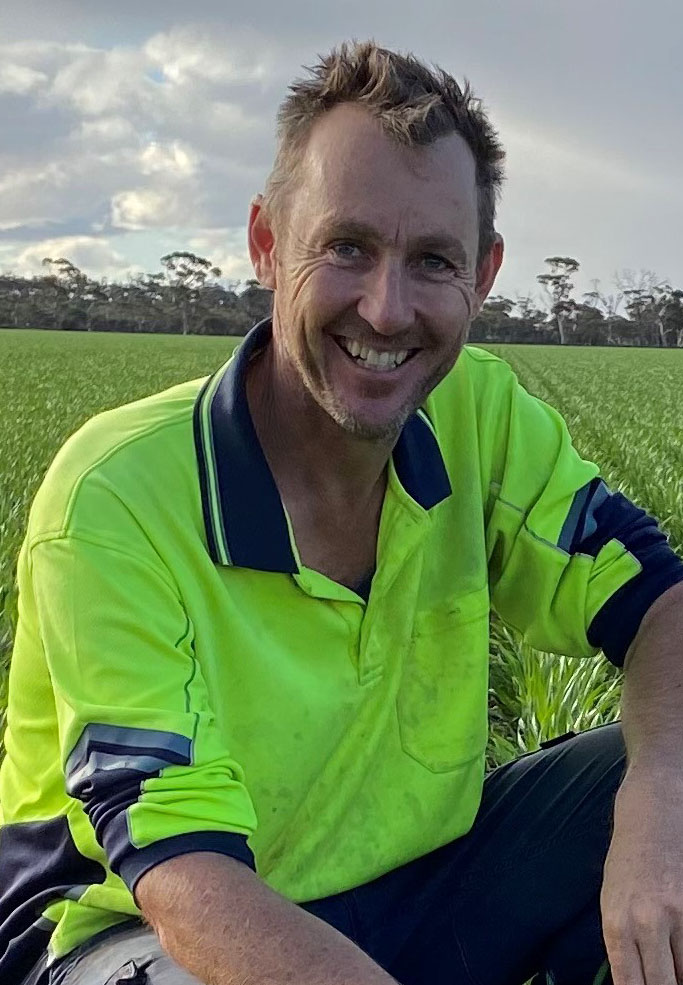
Mr Bob Nixon
Western Australia
Director (Non-Executive) and Deputy Chair
Appointed: 1 October 2020, reappointed 1 October 2023, appointed Deputy Chair in 2024
Member : Audit and Risk Committee (from 9 December 2020 to 30 September 2023, reappointed 6 December 2023); Remuneration People and Performance Committee (from 6 December 2023).
Bob owns and manages a family farming business Bunketch Ag in the 300mm annual rainfall North-eastern wheatbelt of Western Australia. The family grow wheat, barley, canola, lupins, chick peas and serradella cover crop. He has a strong interest in crop agronomy, soil health, whole of landscape management and resilient farming systems and communities.
Bob is past Chair of the Grain Industry Association of WA (GIWA) from 2017 to 2020 and past member of the GRDC Soils Constraints West steering committee. He currently sits on the WA Soil and Land Conservation Council and is an active member of his local Liebe Grower Group.
He completed a Nuffield Scholarship in 2014 looking into ‘Mitigating Risk in a Dry and Variable Climate’ in response to the drying out and increase in seasonal variability of the WA cropping belt. Bob was awarded the GRDC Seed of Light in 2019 for his work in managing soil constraints.

Mr Nigel Hart
Managing Director
Nigel grew up in southern New South Wales and has spent more than 25 years working in executive and leadership positions in large scale infrastructure, port, warehousing and supply chains operations for the grains sector, both within Australian and internationally.
Nigel has worked as an expert consultant on a range of projects in the grain supply chain from international bench marking of bulk and container supply chains, plant protein manufacturing, hybrid wheat commercialisation, digital strategies for supply chain optimisation and the design and development of a 1.3mmt grain export terminal.
He was previously Global Director (Ports) at Archer Daniels Midland where he led the development of a global port’s growth and productivity strategy across Asia, Europe, South America and the USA.
Prior to this he spent 15 years at GrainCorp culminating in his position as Group General Manager – Storage and Logistics where he led the storage and logistics operations, grain accumulation and domestic customer management teams across the east coast of Australia.
Nigel has a bachelor’s degree in Agriculture from Western Sydney University, is a Fellow of the Australian Institute of Company Directors and successfully completed the Advanced Management Program at Harvard Business School in 2013.

Mr Richard Heath, BSc (Hons), GAICD
New South Wales
Director (Non-Executive)
Appointed : 1 October 2017, reappointed to 30 September 2023, reappointed to 30 September 2026
Chair: Remuneration, People and Performance Committee (from 9 December 2020 to 30 September 2023, reappointed 6 December 2023)
Richard grew up on a family farm on the Liverpool Plains in north-west New South Wales. He managed the cropping operations of the farm for nearly 20 years, overseeing production of wheat, barley, chickpea, faba beans, canola, sorghum, sunflowers, mungbean and cotton. Richard has been an early adopter of new farming technologies and travelled on a Nuffield scholarship in 2003 to research precision applications of fertiliser.
Richard is the Executive Director of the Australian Farm Institute, an independent agricultural policy research organisation. Prior to this role, Richard was Associate Professor of Agronomy and Farm Management at the University of Sydney, with responsibility for the management of the university’s north-west farms group, including the Plant Breeding Institute at Narrabri.
Richard was a member of GRDC’s Northern Regional Panel from 2005 to 2011 and was a director of Nuffield Australia Farming Scholars from 2011 to 2017.
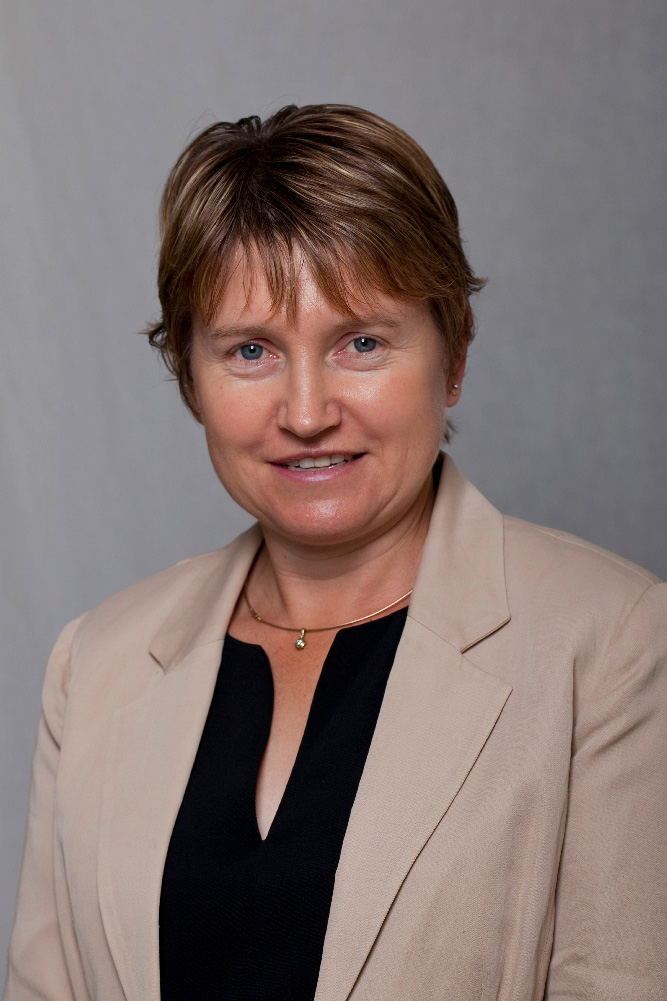
Mrs Sharon Starick
South Australia
Appointed: 30 November 2018, reappointed to 30 September 2023, reappointed 30 September 2026
Chair: Audit and Risk Committee (from 6 December 2023).
Member : Audit and Risk Committee (from 9 December 2019 to 30 September 2020 and then from 9 December 2020 to 30 September 2023).
Since 1993, Sharon and her husband have been producing grain and pork in the Mallee region of South Australia. Her extensive knowledge of sustainable primary production was developed through a Degree in Agricultural Science through Adelaide University, her own on‑farm practices and past participation on the Boards of Mallee Sustainable Farming and the South Australian No-Till Farmers Association.
Through Sharon’s strong interest in policy development and collaboration within Australian agriculture, she currently holds the positions of Chair of Animal Health Australia, Director of the Regional Investment Corporation, independent Chair of the SA Future Drought Fund Advisory Group and Committee member, Murray Plains Farmers
She also has a passion for natural resource management and conservation that is reflected in her past involvement as Chair of the South Australian Murray– Darling Basin Natural Resources Management Board and as a member of South Australia’s Natural Resources Management Council, the Australian Landcare Council and the Community Advisory Committee for the Murray–Darling Basin Ministerial Council.
As a past director of Land & Water Australia, Sharon has experience in strategic planning for research and extension. Sharon is a past participant in the Murray -Darling Basin Leadership Program and was awarded the RIRDC Rural Women’s Award for South Australia in 2003.
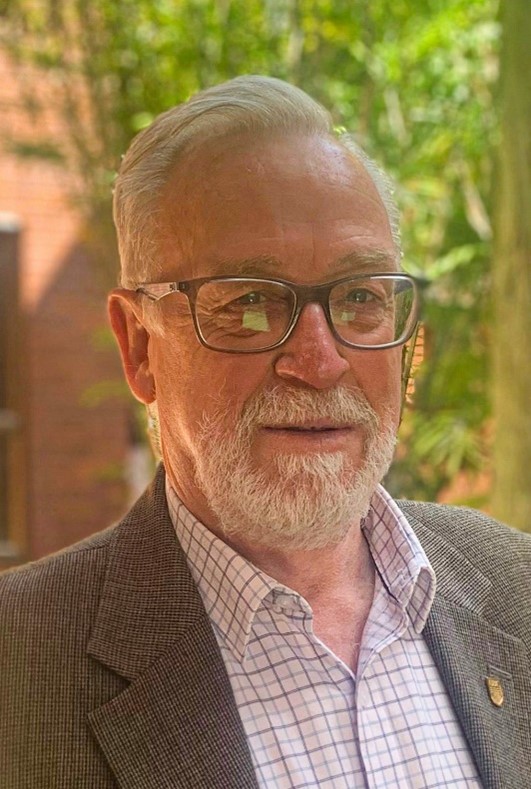
Mr Shaun Coffey FTSE CRSNZ FAIA FAICD
Appointed: 1 October 2023 to 30 September 2026
Shaun Coffey is an internationally acknowledged leader in agriculture, with over 30 years of experience as a Non-Executive Director, Chairman and CEO.
An agronomist and geneticist by training, Shaun developed broad interests across science and technology through key leadership roles, such as Director of Research and Extension in the Queensland Department of Primary Industries, Foundation Chief of the CSIRO Division of Livestock Industries (2002-2006) and as CEO of the NZ Crown entity, Industrial Research Ltd (2007-2013).
Shaun has become known as a business and science entrepreneur. He has been involved in the founding of many start-ups and joint ventures in technology. He has operated in the agriculture, manufacturing, energy, environment, health, and services sectors
He currently serves on the Board of the Future Fuels Cooperative Research Centre and as Director of Capacity Building in the Crawford Fund for a Food Secure World. He recently retired as Chair of the Agriculture and Food Forum of the Australian Academy of Technological Sciences and Engineering.

Ms Kellie Benda
Member: Audit and Risk Committee (from 6 December 2023).
Kellie is an experienced non-executive director having served or is serving on boards as a non-executive director and Chair, since 2003; including Federal and State government trading enterprises, public listed and unlisted companies, private equity funded entities, mutuals and various not-for-profits.
She is a graduate of and has been awarded a fellowship by the Australian Institute of Company Directors.
After commencing her career with King & Wood Mallesons as a corporate lawyer, she moved into investment banking, and most recently held senior executive positions as Chief Operating Officer; Chief Risk Officer, and Executive General Manager within AX20 companies, with responsibility for large and complex portfolios.
She holds a Bachelor of Law, Bachelor of Arts (Industrial Relations), Master of Applied Finance and is a graduate of the Harvard Advanced Management Programme. She has also studied digital leadership at Masters level.
She leads with vision and values; and has a collaborative approach which helps create a trusting, open environment prepared for challenge and change, as proven across a range of industries including property, energy & mining, infrastructure, technology (digital and data, geospatial), agribusiness, carbon, forestry and financial services.
She enjoys working in complex, diverse, changing environments; balancing best practice and an evidence-based approach with the many challenges facing organisations.

Ms Belinda (Bindi) Turner CA MBA MAICD
Belinda (Bindi) Turner is an Agribusiness executive with experience across the grain supply chain. Based in Inverell, NSW where her family operate a mixed farming and stud cattle enterprise, she is the Chief Investment Officer of Agri Carbon Investments, an asset manager providing investment pathways into agriculture, with a focus on regenerative practices and carbon.
Previously Bindi was part of the team that built and operated one of the largest grain producers in Australia, on behalf of an Institutional Investor.
Bindi has delivered key strategic commercial outcomes in areas such as procurement, contracting, grain marketing and precision agriculture as well as financial and management reporting.
Prior to moving into corporate agriculture, Bindi held senior finance and management roles in the Australian offices of global agricultural commodity trading houses COFCO International and Nidera.
She has been a Director of Queensland Rural Industry Development Authority (QRIDA) since 2015 and chairs the Audit and Risk Committee.
Bindi has an Executive MBA from Melbourne Business School, a Graduate Certificate in Agribusiness from Marcus Oldham College, a Bachelor of Commerce (Liberal Studies) from the University of Sydney and is a Chartered Accountant.

Ms Natalie Sommerville
Appointment: 1 October 2023 to 1 October 2026.
The board has two committees:
Audit and Risk Committee — assists the board in fulfilling its corporate governance responsibilities and reviews our:
- external financial and performance reporting process
- internal control system
- risk management strategy and processes
- internal and external audits
- statutory reporting obligations.
Members of the Audit and Risk Committee are to be appointed.
Remuneration, People and Performance Committee – reviews and makes recommendations to the board on matters relating to:
- our recruitment, remuneration, development, performance and retention policies including strategic workforce planning and organisational development
- fostering a performance culture
- the selection, remuneration and performance of the Managing Director
- the development and performance of the board.
Members of the Remuneration, People and Performance Committee are to be appointed.
Was this page helpful?
YOUR FEEDBACK

An official website of the United States government
Here's how you know
The .gov means it’s official. Federal government websites often end in .gov or .mil. Before sharing sensitive information, make sure you’re on a federal government site.
The site is secure. The https:// ensures that you are connecting to the official website and that any information you provide is encrypted and transmitted securely.
About Grants
The lifecycle of grants and cooperative agreements consists of four phases: Pre-Award, Award, Post-Award, and Close Out.
Access to Data
The National Institute of Food and Agriculture is committed to serving its stakeholders, Congress, and the public by using new technologies to advance greater openness.
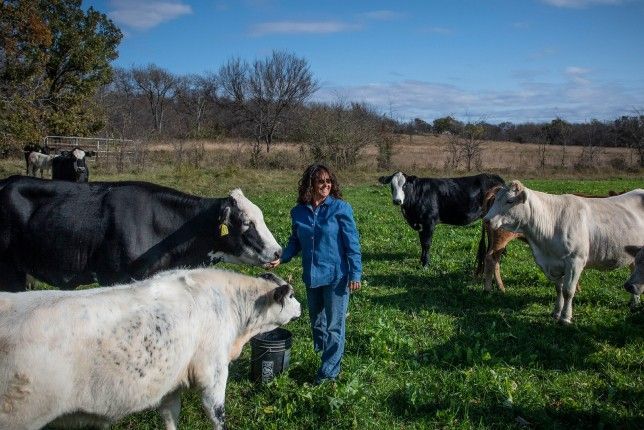
Access Data Gateway
The Data Gateway enables users to find funding data, metrics, and information about research, education, and extension projects that have received grant awards from NIFA.
View Resources Page
This website houses a large volume of supporting materials. In this section, you can search the wide range of documents, videos, and other resources.

Featured Webinar
Second annual virtual grants support technical assistance workshop.
Check out this five-day workshop in March 2024 workshop, designed to help you learn about NIFA grants and resources for grants development and management.
The National Institute of Food and Agriculture provides leadership and funding for programs that advance agriculture-related sciences.
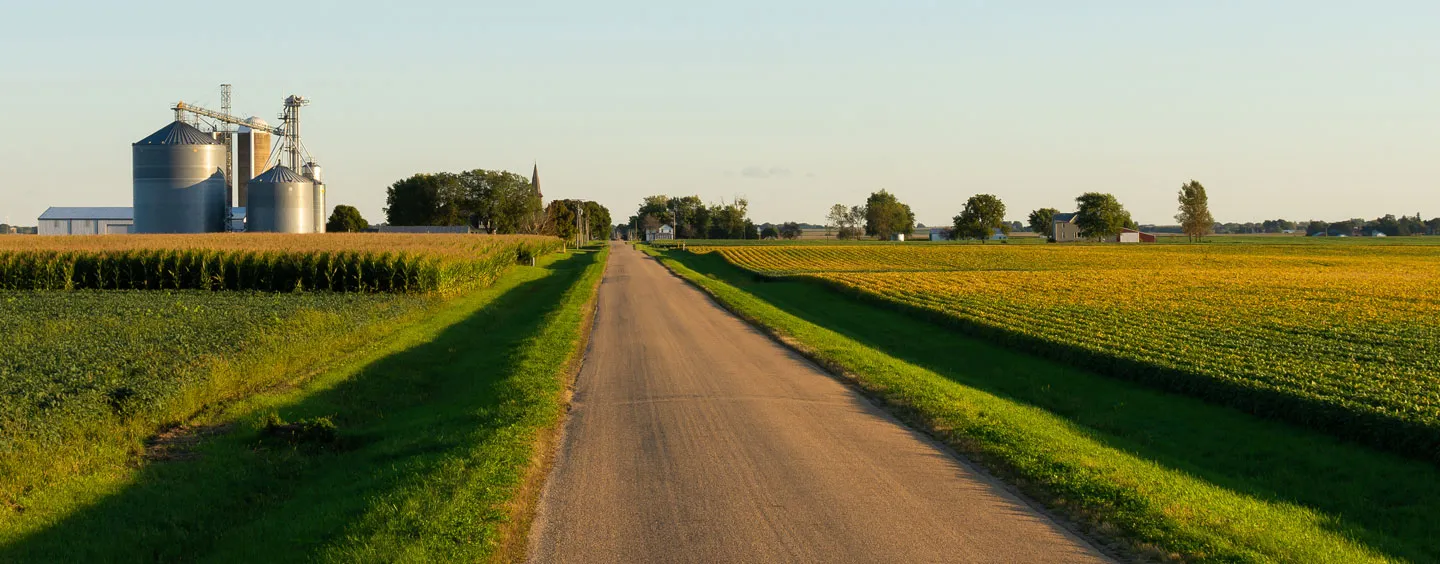
Regional Rural Development Centers
The NIFA Regional Rural Development Centers (RRDCs) play a unique role in USDA's service to rural America. They link the research and educational outreach capacity of the nation's public universities with communities, local decision-makers, entrepreneurs, families, and farmers and ranchers to help address a wide range of development issues.
They collaborate on national issues that span regions — like e-commerce, the changing interface between rural, suburban, and urban places, and workforce quality and jobs creation. Each tailors programs to address particular needs in its region.
The RRDCs bring together the most innovative minds — from inside and outside universities — to address cutting-edge issues without regard to state boundaries. They respond to emerging issues, generate credible science-based information to clarify these issues, and create public-private partnerships to address them.
The RRDCs were established by the Rural Development Act of 1972. The North Central Regional Center for Rural Development is based at Purdue University. The Southern Rural Development Center is based at Mississippi State University. The Northeast Regional Center for Rural Development is based at The Pennsylvania State University, and the Western Rural Development Center is based at Utah State University. Each RRDC is administered by a joint agreement between USDA and a host institution operating for the Extension Services and the Agricultural Experiment Stations in the respective region. Core funding is from NIFA for integrated research, education, and extension activities. Click here to view previously funded abstracts.
For more information, see the USDA Regional Rural Development Centers Map .
Latest Updates
- Latest Funding Opportunities
- Latest Blogs
- Latest Impacts
funding opportunity
New beginning for tribal students program, research facilities act program, agriculture and food research initiative - education and workforce development, veterinary diagnostic laboratory scientists develop tool to rapidly detect devastating swine disease, nsf and usda join forces to boost innovation in agricultural robotics, master gardeners help provide solutions for gardeners, emerging technologies aid conservation and management, tropical birds could tolerate warming better than expected, your feedback is important to us..
- Media and Speeches
- Completed inquiries
Rural research and development corporations
Public inquiry.
This inquiry has concluded. The final report was released on 15 June 2011.
Amongst other things, this inquiry examined the:
- rationale for Commonwealth Government investment in rural research and development
- appropriateness of current funding levels and arrangements - particularly levy arrangements, and matching Commonwealth contributions
- extent to which Rural Research and Development Corporation (RRDC) funded projects provide for an appropriate balance between industry-specific and broader community benefits
- effectiveness of the RRDC model in enhancing the competitiveness and productivity of Australia's rural industries
- scope for improvements to the RRDC model - and any alternative models that could deliver better outcomes.
You may also be interested in
Final Government response - see pages 31 to 45
Preliminary Government response
Media release: Productivity Commission Inquiry into Rural Research and Development
Please note: The draft report and issues paper are for research purposes only. For final outcomes of this inquiry refer to the inquiry report.
Issues paper (PDF - 385 Kb)
Draft report (PDF - 1271 Kb)
Draft report
The draft report for this project is not available online.
Request a draft report
Key documents
Inquiry report
The report of the public inquiry into Rural Research and Development Corporations was released on 15 June 2011.
Submissions
Submissions received for the Rural Research and Development Corporations public inquiry
Public hearings
Details of public hearings and transcripts for the inquiry into Rural Research and Development Corporations.
Your guide to the structures , organisations and key people in the Australian Government
- Agriculture, Fisheries and Forestry
Rural Industries Research and Development Corporation (trading as AgriFutures Australia)
Further information, type of body.
B. Corporate Commonwealth Entity
GFS Sector Classification
Established by / under.
Act / Regulation
Established By/Under More info
Primary Industries Research and Development Act 1989
Annual Report Prepared and tabled?
Classification.
A. Principal

GFS Function / Sector Reported
Materiality, creation date.
1 July 1990
Postal Address
C/- CSU, Locked Bag 588, Wagga Wagga, NSW 2650
Government appointed boards
- Rural Industries Research and Development Corporation (trading as AgriFutures Australia) (Board)
- Rural Industries Research and Development Corporation Selection Committee
Quick feedback
Let us know what you think of this page. Your ideas and feedback are encouraged and will be used to help us prioritise design fixes and new features.

Rural Industries Research and Development Corporation
- Rural Industries Research and Development Corporation Australia Contributed by National Library of Australia
Full description
RIRDC is a statutory authority established by the Primary Industries and Energy Research and Development Act 1989 (PIERD Act). The Corporation was established by the Australian Government to work with industry to invest in research and development for a more profitable, sustainable and dynamic rural sector.
Specifically, RIRDC’s mandate from government is to achieve results from research and development investments in three areas:
- New and emerging industries
- Specific established rural industries
- National rural issues.
Related Data
- Owner of Pharmacokinetic data for twelve therapeutic equine medications
Related People
- Associated with Associate Professor James McGree
- Associated with Professor Martin Sillence
User Contributed Tags
Login to tag this record with meaningful keywords to make it easier to discover
- Local : 10378.3/8085/1018.13432
Contact Information
Copy and paste a formatted citation or use one of the links to import into a bibliography manager.
Query Title:
Folder name:.
- [[key]] ([[value]])
Official websites use .gov A .gov website belongs to an official government organization in the United States.
Secure .gov websites use HTTPS A lock ( A locked padlock ) or https:// means you’ve safely connected to the .gov website. Share sensitive information only on official, secure websites.
- Search ITA Search

Rural Export Center
How the rural export center can help you.
As a rural company, you’ve worked hard to establish your business. Whether you’re a newcomer to exporting or a seasoned expert, our step-by-step process is designed to efficiently grow your export operations. How can we help?
- Customized Market Research : With our customized international market research, you will be empowered to identify new opportunities and avoid potential pitfalls, identifying the best markets and specific buyers to facilitate profitable overseas partnerships.
- Due Diligence : As you respond to international inquiries, you will benefit from our due diligence service that helps determine the legitimacy of a potential partner.
- Website Globalization : You can even grow your global reach when you’re not working by taking advantage of our website globalization review to ensure that your website is positioned to acquire international customers.
- Export Education : In addition to research services, we offer a series of virtual seminars on Website Globalization, Market Research Skills, Due Diligence Tips, and Export Management Companies.
These value-driven services augment the existing worldwide network of Commercial Service offices with experts located in more than 70 countries.
View a video on the different Rural Export Center services!
About the rural export centers.
Our mission is to empower rural U.S. companies to thrive in international markets through actionable market intelligence and global connections. Our National REC, located in Fargo, North Dakota, specializes in conducting customized market research designed to guide rural U.S. companies toward the most opportune exporting markets.
Additionally, we have eight regional RECs that conduct rural outreach in their respective territories to ensure that we are reaching rural companies and educating them on the services and solutions of the Rural Export Center and the Commercial Service to help increase exports from rural America. If you are interested in the market research and other services of the REC, please contact us at [email protected] . For the full range of U.S. Commercial Service services, please contact your local U.S. Commercial Service Office .
Rural Export Center Services
RAISE is Rural America’s Intelligence Service for Exporters. It provides rural U.S. companies with one-on-one market intelligence from a team who identifies customized industry-specific insights and contacts. Being informed before you go helps build confidence and knowledge, making your market entry more efficient.
The Export Management Company (EMC) Directory provides a listing of vetted and experienced U.S. export management companies ready to help your business export more. EMCs can boost international business opportunities while you focus on running the U.S. market. Contact the REC ( [email protected] ) to learn how EMCs can help you grow your business internationally.
The Website Globalization Review (WGR) Gap Analysis service provides technical and strategic assessment of a business’s ecommerce sales channel efforts. These reports include SEO tips, simple enhancements, best practices, and more.
Conduct a brief assessment of a potential partner to identify any potential concerns or red flags. The aim is to quickly highlight any areas of risk that may impact the viability of a partnership. The report will focus on key factors such as financial health, legal compliance, and reputation to provide insights into potential areas of concern.

Making a difference in rural Nevada since 1992.
Small Business
We have opportunities for small businesses.

Homeowner Rehabilitation
You may be eligible for home owner housing rehabilitation.

Weatherization
Low income weatherization assistance program.
About Rural Nevada Development Corporation
Rural Nevada Development Corporation (RNDC) is a 501(c) 3 non-profit development corporation formed in January 1992 to serve the fifteen (15) rural counties, rural Clark and Washoe counties, and the twenty-seven (27) Native American tribes of Nevada. RNDC has been responsive to the needs of rural communities by addressing critical issues such as affordable housing, down payment assistance, homeowner rehabilitation and small business alternative lending practices and has received certification from the Department of Treasury as a Community Development Financial Institution (CDFI). Its ability to leverage involvement statewide from public and private sources has been successful. In 1999, the RNDC business-lending program won a “Best Practice” award from HUD for its creativity in addressing a problem, and effectively leveraging resources. Collaboration among state, federal, local governments, private, and other non-profit organizations is the primary reason RNDC has been successful.
Partners participating in small business lending and housing services consist of the following:
- USDA Rural Development
- Small Business Administration (SBA)
- Economic Development Administration
- Governors Office of Economic Development
- Nevada–Small Business Development Center
- Inter-Tribal Council of Nevada
- Nevada Housing Division
- Nevada State Development Corporation
- Nevada State Bank
- Charles Schwab Bank
- State & Local Governments
Our Experience
Originally designed to offer business finance and community housing development services, RNDC has provided and expanded these services while working to identify the most feasible economic development activities in each community. Its mission statement reflects its primary purpose of providing economic development assistance, financing opportunities to small businesses, and healthy, safe, affordable housing to persons in Rural Nevada. Specific emphasis has been and will continue to be on promoting the growth and development of business concerns, addressing the need for affordable housing, as well as, assisting rural communities and Native American Tribes with their development needs.
“Alone, we can do so little; together we can do so much.”
Helen Keller
We love to help.
Contact Info
1320 E. Aultman Street, Ely, NV, 89301
Open Office Hours
M-F: 7:30am - 4:30pm
Get in Touch
[email protected] (775) 289-8519 (866) 404-5204
National Center for Science and Engineering Statistics
- Report PDF (690 KB)
- Report - All Formats .ZIP (1.1 MB)
- Share on X/Twitter
- Share on Facebook
- Share on LinkedIn
- Send as Email
Business R&D Performance in the United States Tops $600 Billion in 2021
September 28, 2023
Funds spent for business R&D performed in the United States, by type of R&D, source of funds, and size of company: 2018–21
i = more than 50% of the estimate is a combination of imputation and reweighting to account for nonresponse.
a Domestic R&D performance is the cost of R&D paid for and performed by the respondent company and paid for by others outside of the company and performed by the respondent company. b R&D comprises creative and systematic work undertaken in order to increase the stock of knowledge and to devise new applications of available knowledge. This includes (1) activities aimed at acquiring new knowledge or understanding without specific immediate commercial applications or uses (basic research), (2) activities aimed at solving a specific problem or meeting a specific commercial objective (applied research), and (3) systematic work, drawing on research and practical experience and resulting in additional knowledge, which is directed to producing new processes or to improving existing products—goods or services—or processes (development). c Includes foreign subsidiaries of U.S. companies. d Includes companies located inside and outside the United States; U.S. state government agencies and laboratories; U.S. universities, colleges, and academic researchers; and all other organizations located inside and outside the United States. e Includes only companies with 10 or more domestic employees.
Detail may not add to total because of rounding.
National Center for Science and Engineering Statistics and Census Bureau, Business Enterprise Research and Development Survey.
R&D Performance, by Type of R&D, Industry Sector, and Source of Funding
In 2021, of the $602 billion that companies spent on R&D, $40 billion (7%) was spent on basic research, $86 billion (14%) on applied research, and $476 billion (79%) on development ( table 1 ). In 2021, companies in manufacturing industries performed $326 billion (54%) of domestic R&D , defined as R&D performed in the 50 states and Washington, DC ( table 2 ). Most of the funding came from these companies’ own funds (88%). Companies in nonmanufacturing industries performed $276 billion of domestic R&D (46% of total domestic R&D performance), 87% of which was paid for from companies’ own funds.
The U.S. federal government was a large source of external funding for R&D ( also referred to as R&D paid for by others ) across all industries. Of the $75 billion paid for by others, the federal government accounted for $24 billion. Seventy-four percent of federal government funding went to three industry groups: aerospace products and parts (North American Industry Classification System [NAICS] code 3364) ($11 billion), scientific research and development services (NAICS 5417) ($4 billion), and computer and electronic products (NAICS 334) ($3 billion). Companies also received funds from other U.S. companies ($27 billion) and foreign companies—including foreign parent companies of U.S. subsidiaries ($23 billion). Eighteen billion dollars (69%) of all business R&D funded by other U.S. companies was for scientific research and development services (NAICS 5417). The distribution of foreign company R&D funding was spread more broadly across multiple industries ( table 2 ). (See “ Survey Information and Data Availability ” for information on the availability of data tables with full industry detail.)
Funds spent for business R&D performed in the United States, by source of funds, selected industry, and company size: 2021
D = suppressed to avoid disclosure of confidential information; i = more than 50% of the estimate is a combination of imputation and reweighting to account for nonresponse; r = relative standard error is more than 50%.
NAICS = North American Industry Classification System; nec = not elsewhere classified.
a All R&D is the cost of R&D paid for and performed by the respondent company and paid for by others outside of the company and performed by the respondent company. b Includes foreign subsidiaries of U.S. companies ($32.1 billion). c Includes foreign parent companies of U.S. subsidiaries ($20.8 billion) and unaffiliated companies ($2.5 billion). Excludes funds from foreign subsidiaries to U.S. companies paid for through intercompany transactions ($32.1 billion). d Includes U.S. state government agencies and laboratories ($0.3 billion); U.S. universities, colleges, and academic researchers (< $0.01 billion); and all other organizations located inside ($0.7 billion) and outside the United States (< $0.01 billion). e Includes only companies with 10 or more domestic employees.
Detail may not add to total because of rounding. Industry classification was based on the dominant business code for domestic R&D performance, where available. For companies that did not report business codes, the classification used for sampling was assigned. Statistics are representative of companies located in the United States that performed or funded $50,000 or more of R&D.
National Center for Science and Engineering Statistics and Census Bureau, Business Enterprise Research and Development Survey, 2021.
Sales, R&D Intensity, and Employment of Companies That Performed or Funded R&D
U.S. companies that performed or funded R&D reported domestic net sales of $13 trillion in 2021 ( table 3 ). Determining the amount of domestic net sales and operating revenues was left to the reporting company. However, guidance was given to include revenues from foreign operations and subsidiaries and from discontinued operations and to exclude intracompany transfers, returns, allowances, freight charges, and excise, sales, and other revenue-based taxes. For all industries, the R&D intensity (R&D-to-sales ratio) was 4.6%; for manufacturers, 5.0%; and for nonmanufacturers, 4.2%. Manufacturing industries with high levels of R&D intensity in 2021 were pharmaceuticals and medicines (NAICS 3254) (16.1%) and computer and electronic products (NAICS 334) (13.0%). Among the nonmanufacturing industries, industries with high levels of R&D intensity were scientific research and development services (NAICS 5417) (41.2%), software publishers (NAICS 5112) (12.9%), and computer systems design and related services (NAICS 5415) (10.2%).
Businesses that performed or funded R&D employed 23.7 million people in the United States in 2021 ( table 3 ). Employment statistics in this InfoBrief are headcounts unless they are designated as full-time equivalent (FTE) estimates. R&D employees include researchers (defined as R&D scientists and engineers and their managers) and the technicians, technologists, and support staff members who work on R&D or who provide direct support to R&D activities. Approximately 2.1 million (9%) were business R&D employees. The number of persons employed who were assigned full time to R&D plus a prorated number of employees who worked on R&D only part of the time was 1.9 million FTEs, of which 1.3 million FTEs were R&D researchers.
Of the 2.1 million people working on R&D in companies that performed or funded business R&D in 2021, 1.5 million were men and 0.6 million were women; 48% of the men and 45% of the women worked in manufacturing industries ( table 4 ). Researchers—that is, scientists, engineers, and their managers—accounted for 1.4 million of the 2.1 million R&D workers (67%). Of the R&D workers, 130,000 (9%) held PhD degrees. R&D technicians numbered 501,000, and 205,000 were grouped as other supporting staff.
Sales, R&D, R&D intensity, and employment for companies that performed or funded business R&D in the United States, by selected industry and company size: 2021
a Dollar values are for goods sold or services rendered by R&D-performing or R&D-funding companies located in the United States to customers outside of the company, including the U.S. federal government, foreign customers, and the company's foreign subsidiaries. Included are revenues from a company’s foreign operations and subsidiaries and from discontinued operations. If a respondent company is owned by a foreign parent company, sales to the parent company and to affiliates not owned by the respondent company are included. Excluded are intracompany transfers, returns, allowances, freight charges, and excise, sales, and other revenue-based taxes. b All R&D is the cost of R&D paid for and performed by the respondent company and paid for by others outside of the company and performed by the respondent company. c R&D intensity is the cost of domestic R&D paid for by the respondent company and others outside of the company and performed by the company divided by domestic net sales of companies that performed or funded R&D. d Data recorded on 12 March represent employment figures for the year. e Headcounts of researchers, R&D managers, technicians, clerical staff, and others assigned to R&D groups. f Includes only companies with 10 or more domestic employees.
Detail may not add to total because of rounding. Industry classification was based on the dominant business code for domestic R&D performance, where available. For companies that did not report business codes, the classification used for sampling was assigned.
Find Info For
- Current Students
- Prospective Students
- Research and Partnerships
- Entrepreneurship and Commercialization
Quick Links
- Health and Life Sciences
- Info Security and AI
- Transformative Education
- Purdue Today
- Purdue Global
- Purdue in the News
April 24, 2024
Recognizing the critical need for broadband to bridge the digital divide
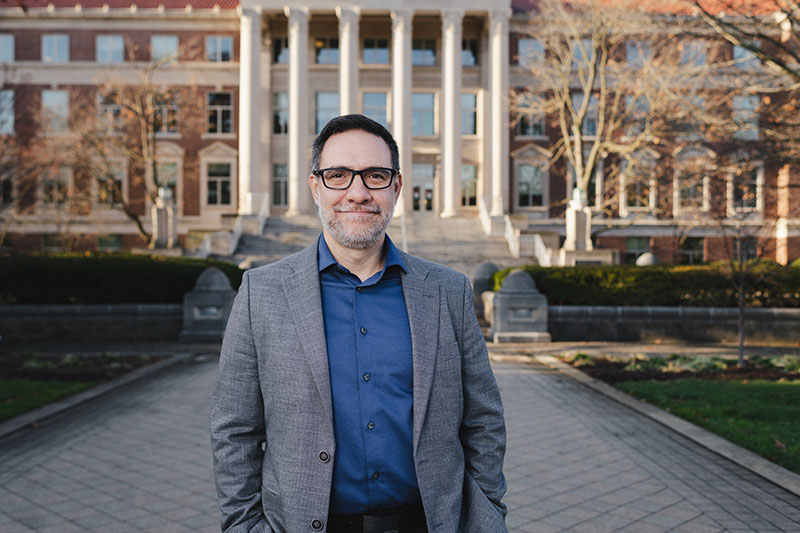
Roberto Gallardo, Purdue vice president for engagement, says the digital divide poses a serious and significant challenge in the 21st century for the country. (Purdue University photo)
Purdue economic development expert explains how the technology is key to unlocking opportunity
WEST LAFAYETTE, Ind. — For urban and rural communities, the digital divide is more than just the lack of access to high-speed internet — it’s a disconnect from economic and social ties as well as opportunities in a fast-changing society.
Roberto Gallardo, Purdue University’s vice president for engagement, has spent the past decade analyzing local and regional community economic development, including the use of technology. He notes that the U.S. government’s plans to invest $42.5 billion in the Broadband Equity, Access and Deployment (BEAD) program will help narrow this divide by ensuring a growing number of Americans can connect to fast internet, regardless of their location or socioeconomic status.
“The federal program recognizes that in today’s interconnected world, high-speed internet access is not a luxury; it’s a necessity,” said Gallardo, who was named in October 2023 to lead the newly formed Purdue Broadband Team . “It is an essential component to workforce training and regional development, helping rural communities to thrive.”
ADDITIONAL INFORMATION
- Purdue Center for Regional Development leads effort for Indiana’s Digital Equity Plan
- Purdue launches broadband team, effort to increase high-speed internet access, adoption and use throughout Indiana
- Purdue, IU to collaborate on analysis of Indiana’s $500 million economic development efforts
Gallardo, who also serves as director of the Purdue Center for Regional Development, has garnered the attention of top federal officials for his regional economic development expertise. The Federal Reserve Board in January announced Gallardo was selected to join its Community Advisory Council for a three-year term. The Federal Reserve plays a crucial role in managing the U.S. economy and financial system, aiming to promote stability, growth and prosperity.
“As a member of the CAC, I’ll be able to provide ground-level perspective, advice and recommendations to the Fed on relevant policy matters and emerging issues, such as broadband and rural economic development,” said Gallardo, who serves in a similar capacity for the regional Federal Reserve Bank in Chicago.
In 2016 Gallardo developed the Digital Divide Index, a dataset that provides a reliable way to measure the gap between the haves and have-nots of digital access and use. Gallardo said the tool is intended to serve policymakers as a pragmatic resource.
The index scores include both broadband availability/adoption and socioeconomic characteristics.
Gallardo said the Digital Divide Index has been requested more than 150 times since 2020 by government entities, nonprofits and institutions of higher education to help with planning as well as research.
Gallardo said the digital barrier goes beyond the lack of infrastructure. It also means communities, especially in rural areas, are disconnected from economic and social ties and opportunities in the 21st century.
“Those constraints can limit any community’s ability to overcome economic struggles. The disconnect is an underpinning to persistent poverty,” Gallardo said. “As a leading research university and land-grant institution, Purdue is well positioned to find more effective and equitable solutions for the ever-increasing digital society and economy.”
Research bandwidth
During Gallardo’s tenure at the helm, the Purdue Center for Regional Development has taken on multiple economic development projects for state and federal governments. Three current projects have a combined value in terms of more than $3 billion in potential maximum grants awarded. The PCRD’s job is to document the impact of these programs and tell stories from these government grant programs.
One such program is the state of Indiana’s Regional Economic Acceleration and Development Initiative.
The PCRD and the Indiana University Public Policy Institute are collaborating on a four-year project to examine the economic and community impact of the first round of the $500 million READI grant program.
NSF Engines
At the federal level, the PCRD was awarded a one-year contract from the National Science Foundation to establish the framework and process to evaluate the impact of the NSF Regional Innovation Engines competition. The NSF Engines grant program is intended to stimulate innovation-driven economic growth in selected U.S. regions, with special attention to underperforming or disadvantaged regions. The 10 recipients have the potential to receive up to $160 million over the next decade.
Build Back Better
In addition to the NSF Engines project, the PCRD is part of a team evaluating the impact of the Biden administration’s $1 billion Build Back Better Regional Challenge, which aims to boost economic recovery from the pandemic and rebuild American communities, including those grappling with decades of disinvestment. The program is administered through the Economic Development Administration, an agency in the U.S. Department of Commerce.
Broadband’s role in a pandemic-changed world
Gallardo said after the COVID-19 pandemic struck, online activities — from e-learning to remote working — became crucial. Without adequate and reliable connectivity, Americans quickly learned the value and necessity of high-speed, reliable internet.
But even before the global health crisis, Gallardo said there was not only a digital divide, but also a lack of understanding of the value and necessity of broadband.
“There was a disconnect, a lack of awareness. But when COVID hit, it changed everything. It literally accelerated 10 years’ worth of awareness work, at the minimum,” Gallardo said.
The Purdue Broadband Team is part of Purdue President Mung Chiang’s “ABCD” plan to better serve the state through four initiatives: Airport for the Greater Lafayette region, Broadband for rural counties, a Hard-Tech Corridor for central Indiana and Purdue@DC, which brings unique capabilities to the nation’s capital.
About Purdue University
Purdue University is a public research institution demonstrating excellence at scale. Ranked among top 10 public universities and with two colleges in the top four in the United States, Purdue discovers and disseminates knowledge with a quality and at a scale second to none. More than 105,000 students study at Purdue across modalities and locations, including nearly 50,000 in person on the West Lafayette campus. Committed to affordability and accessibility, Purdue’s main campus has frozen tuition 13 years in a row. See how Purdue never stops in the persistent pursuit of the next giant leap — including its first comprehensive urban campus in Indianapolis, the new Mitchell E. Daniels, Jr. School of Business, and Purdue Computes — at https://www.purdue.edu/president/strategic-initiatives .
Writer/Media contact: Wes Mills, [email protected]
Source: Roberto Gallardo
Research News
Communication.
- OneCampus Portal
- Brightspace
- BoilerConnect
- Faculty and Staff
- Human Resources
- Colleges and Schools
Info for Staff
- Purdue Moves
- Board of Trustees
- University Senate
- Center for Healthy Living
- Information Technology
- Ethics & Compliance
- Campus Disruptions
Purdue University, 610 Purdue Mall, West Lafayette, IN 47907, (765) 494-4600
© 2015-24 Purdue University | An equal access/equal opportunity university | Copyright Complaints | Maintained by Office of Strategic Communications
Trouble with this page? Disability-related accessibility issue? Please contact News Service at [email protected] .
RDC is a global railway investment and management company, rooted in bold, ambitious partnerships. RDC is and has always been a family-owned business, putting people over profit and maintaining the highest integrity in everything we do. We invest in railway businesses, but ever more important is our investment in the people and partners who are advancing the industry towards the future.
We aspire to be the most respected railroad company in the world, one that people seek as the partner of choice. The partner that the industry continues to turn to for ambitious pursuits.
We’re only as strong as the partners who are building with us. When the right team of people is assembled, we are unstoppable. And we have the track record to prove it.
We look for the hidden value in markets across the world. We take on deals that others wouldn’t dream of. Many have said, “we’re the only folks crazy enough to do that.” But, we have courage to fail, and the humility in that we don’t know what we don’t know. But that’s how we keep learning.
We are boldly building new standards in the global rail industry by working alongside our partners, challenging each other in ways that allow us to make good decisions, and pursuing a prosperous future, together.
Safety drives Quality
Our philosophy is summed up with one word: Safety. Everything we do starts with safety. It is the backbone of every business we enter into. If you run a safe railroad, you run a profitable railroad.
Our Management Team and Partners
RDC’s management team represents diverse backgrounds and brings unmatched industry knowledge, a unique focus on partnerships, and bold commitments to every market we serve. Our team shares in the values of trust, respect, inclusiveness, and family.
Railroad Development Corporation
Henry Posner, III
John F. Hensler
Vice President & Chief Financial Officer
Nate Asplund
Executive Vice President
Dr. Juan Olaechea
Managing Director-International Business Development
Vice President-Strategic Planning
Tammy Stevenson
Manager-Accounting
Robert A. Pietrandrea
Board Member
IOWA INTERSTATE RAILROAD
Joe Parsons
President and CEO
Carrie Evans
VP & Chief Commercial Officer
iCON Infrastructure
Ferrocarril Central Andino (FCCA)
Jaime Blanco
General Manager
RDC-Deutschland
Dr. Markus Hunkel
Managing Director, RDC Deutschland GmbH and AUTOZUG Sylt GmbH
Alexander Hedderich
Strategic Advisor – Europe
Eurorail/RegioRail
Brice Devinoy
Pop-Up Metro
Meg Richards
Project Manager
Urban Research & Development Corporation Grant Writing, Design and Planning


Faris: People must be paid fairly
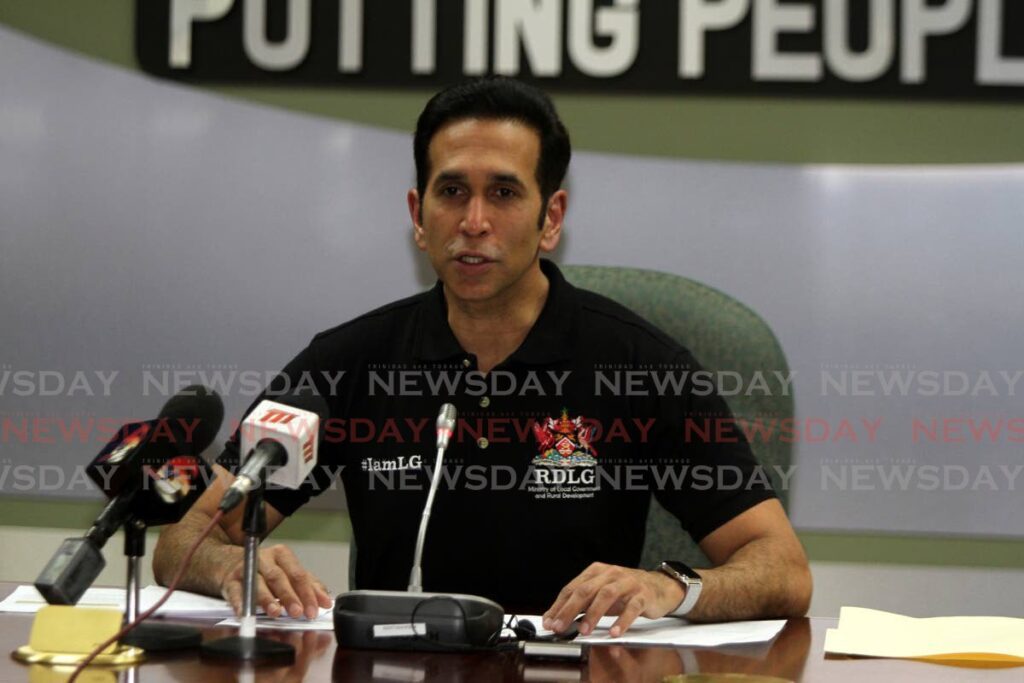
RURAL Development and Local Government Minister Faris Al Rawi says efforts are being made to ensure that wages paid to clerks attached to local government corporations are in keeping with the Minimum Wages (Amendment) Order 2023.
He made this comment in the House of Representatives on Friday.
The order increased the minimum wage from $17.50 to $20.50 per hour.
Al-Rawi said a cabinet note of April 2011 saw clerks in local government corporations being paid a stipend of $3,000 per month. He added there may be a disparity between this figure and what they should be paid in keeping with the Minimum Wages Act.
"People need to be paid fairly in respect of the work done."
Al-Rawi said the ministry was looking at arrears which could be paid to the workers arising from the disparity and would seek additional funding in the mid-year review to address wages people in local government should receive in relation to local government reform.
He reminded MPs that one aspect of the reform dealt with local-government practitioners moving from part-time to full-time employment in the local government system.
Auditor General asks AG to pay her legal costs
Post news is dead, man shot dead in jackson hill, east port of spain, wi retired players foundation receives us$500,000 after ten-year wait, west: new complex will help point fortin, "faris: people must be paid fairly", more in this section, ccj reserves decision in regional case over clico bailout, appeal court blanks devant on information on dragon gas deal, kirton sorias appointed acting tobago hotel and tourism institute ceo, doctor gets injunction against education ministry to take up us studies.
DC/Dox Film Festival Unveils Second Annual Lineup (EXCLUSIVE)
By Addie Morfoot
Addie Morfoot
Contributor
- DC/Dox Film Festival Unveils Second Annual Lineup (EXCLUSIVE) 5 hours ago
- Ina Fichman, Oscar-Nominated Producer of ‘Fire of Love,’ Talks the Future of Hot Docs 12 hours ago
- How ‘Black Box Diaries’ Director Shiori Ito Set Out to Change How Japanese Society Deals With Sexual Assault 1 day ago

DC/Dox has unveiled the lineup for its second annual edition, which takes place in Washington, D.C., from June 13-16. The documentary festival will kick things off with “ Super/Man: The Christopher Reeve Story ,” the Warner Bros. Discovery film that premiered at Sundance earlier this year.
Popular on Variety
In April, Sitney revealed that Ian Bonhôte and Peter Ettedgui’s “Super/Man: The Christopher Reeve Story” was one of four docus that would make up DC/Dox’s Signature Screenings section. The remaining three docus in the program are: Lana Wilson’s “Look Into My Eyes” (DC/Dox Centerpiece film), Dawn Porter’s “Luther: Never Too Much” (DC/Dox Spotlight film), and Sally Aitkin’s “Every Little Thing” (DC/Dox Closing Night film). Each docu premiered at Sundance 2024.
“These four signature films capture important aspects of our human experience: resilience in the face of adversity, the beauty found in small acts of kindness, the power of art and music to unite people in our shared humanity, and the universal desire to find higher meaning in our lives,” said Sitney.
Six feature docus will make their world premieres at DC/Dox: They are: AJ Schnack’s “Majority Rules,” about Alaska’s decision to use ranked-choice voting; Catherine Gund’s Ross Kauffman’s “Wild Wild Space” an exploration of private companies jostling for dominance in space; “Paint Me a Road Out of Here,” about Faith Ringgold’s painting “For the Women’s House”; Bridget Hunnicutt’s “Breaking the West,” about a Russian oligarch’s ambitions in the West; Alexandra Shiva and Lindsey Megrue’s observational portrait of a psychiatric unit for young adults titled “One South: Portrait of a Psyche Ward”; and Asako Gladsjo’s “The Calling, which follows a group of medical students in the Bronx.
DC/Dox will also screen the North American premieres of Peter Middleton’s “Apollo Thirteen: Survival,” which chronicles the almost disastrous NASA mission, and Chad Freidrichs’ “The Cinema Within” about the art and science of film editing. Jeremy Xido’s “The Bones,” an examination of the high-stakes world of dinosaur bone trading, will make its U.S. premiere at the fest. The doc premiered in March at CPH:Dox.
“With this second edition, DC/Dox continues to provide a festival experience that can only be found in the nation’s capital,” says DC/Dox co-founder Jamie Shor. “This festival allows filmmakers the unique opportunity to connect with an audience that can be influencers and amplifiers of their work, as well as appreciators.”
DC/Dox 2024 PROGRAM
Signature Screenings
Signature Screenings Opening Night Screening: Thursday, June 13
SUPER/MAN:THE CHRISTOPHER REEVE STORY: DIRS Ian Bonhôte and Peter Ettedgui. PRODS Lizzie Gillett, Robert Ford, and Ian Bonhôte. United Kingdom, USA. The story of Christopher Reeve is an astonishing rise from unknown actor to iconic movie star, marked by his definitive portrayal of Clark Kent/Superman. After becoming a quadriplegic he became a passionate advocate for disability rights, all while continuing his career in cinema, and dedicating himself to his beloved family. Courtesy of Warner Bros. Discovery. Spotlight Screening: Friday, June 14
LUTHER: NEVER TOO MUCH: DIR Dawn Porter. PRODS Trish D. Chetty, Ged Doherty, Jamie Foxx, Datari Turner, and Leah Smith. USA. Using a wealth of rarely seen archives, the virtuoso vocalist Luther Vandross tells his own story with assistance from his closest friends including Mariah Carey, Dionne Warwick, Valerie Simpson, and Roberta Flack. Courtesy of Sony Music Entertainment and Sony Music Publishing. Centerpiece Screening: Saturday, June 15
LOOK INTO MY EYES: DIR Lana Wilson. PRODS Kyle Martin and Lana Wilson. USA. A group of New York City psychics conduct deeply intimate readings for their clients, revealing a kaleidoscope of loneliness, connection, and healing. Courtesy of A24. Closing Night Screening: Sunday, June 16 EVERY LITTLE THING: DIR Sally Aitken. PRODS Bettina Dalton, Oli Harbottle, and Anna Godas. Australia. Amid the glamor of Hollywood, Los Angeles, a woman finds herself on a transformative journey as she nurtures wounded hummingbirds, unraveling a visually captivating and magical tale of love, fragility, healing, and the delicate beauty in tiny acts of greatness. Courtesy of Wildbear Entertainment, Dogwoof, and HHMI Tangled Bank Studios.
Features 1-800-ON-HER-OWN: DIR Dana Flor. PROD Amy Hobby. USA. 1-800-ON-HER-OWN follows groundbreaking indie musician/feminist Ani DiFranco, founder of the first “woman-run non-corporate queer-happy” label, Righteous Babe Records, on a wild road trip from her punk-folk past to her life today as an activist, mother and rock star. Throughout, Ani remains resolutely true to herself, no matter the cost. ADMISSIONS GRANTED: DIRS Hao Wu and Miao Wang. PRODS Hao Wu and Miao Wang. USA. In a landmark Supreme Court case pitting Asian American plaintiffs against Harvard University, activists on both sides wrestle with hard truths about race and equality, as the fate of affirmative action hangs in the balance. Courtesy of MSNBC Films. AIN’T NO BACK TO A MERRY-GO-ROUND: DIR Ilana Trachtman. PROD Ilana Trachtman. USA. Five Howard University students rode a segregated carousel outside Washington, DC in 1960, igniting the first organized interracial civil rights protest in US history. This is the untold story of the Jews they marched with, Nazis they provoked, Congressmen they inspired, and Civil Rights leaders they became. Screening as part of DC/FRAME. AMERICA’S BURNING: DIR David Smick. PROD Ian Michaels. USA. America’s Burning explores the country’s divide through the lens of the U.S. economy and examines the big question — could an economic civil war take us all down? AND SO IT BEGINS: DIR Ramona S. Diaz. PROD Ramona S. Diaz. USA. Amidst the traditional pomp and circumstance of Filipino elections, a quirky people’s movement rises to defend the nation against deepening threats to truth and democracy. In a collective act of joy as a form of resistance, hope flickers against the backdrop of increasing autocracy. ANTIDOTE: DIR James Jones. PROD James Jones. United Kingdom. A deeply immersive and urgent film that reveals the cost of standing up to Vladimir Putin and daring to tell the truth about modern Russia. APOLLO THIRTEEN: SURVIVAL: DIR Peter Middleton. PRODS Hugh Davies and Clive Patterson. USA. In April 1970, NASA faced the greatest crisis in its history: three astronauts were halfway to the moon on a spacecraft that had suffered a catastrophic explosion. With access to NASA’s complete audiovisual archives, APOLLO THIRTEEN: SURVIVAL tells the story of a space mission like no other. North American Premiere. Courtesy of Netflix. THE BITTER PILL: DIR Clay Tweel. PRODS Tim Grant, Shannon E. Riggs, and Mary Rohlich. USA. A small-town lawyer takes on a 500 billion-dollar sector of the pharmaceutical industry to aid his community in its recovery from the opioid epidemic. BLACK BOX DIARIES: DIR Shiori Ito. PRODS Eric Nyari, Hanna Aqvilin, and Shiori Ito. Japan, United Kingdom, USA. Young journalist Shiori Ito embarks on a courageous investigation of her own sexual assault in an improbable attempt to prosecute her high-profile offender. Her quest becomes a landmark case in Japan, exposing the country’s outdated judicial and societal systems. Courtesy of Dogwoof. BLACK TABLE: DIRS John Antonio James and Bill Mack. PRODS Katie Taber, John Antonio James, Bill Mack. USA. For Black students at an elite college during the early days of the culture wars, the most important lessons didn’t happen inside the classroom. THE BONES: DIR Jeremy Xido. PROD Ina Fichman. Canada, Germany. Traversing the globe, paleontologists are on a quest to unearth dinosaur fossils that may hold the key to save humanity from extinction. It’s a race against time before the bones disappear into the hands of fossil dealers, who stand to make millions by selling them on the open market. US Premiere. Courtesy of Dogwoof. BREAKING THE WEST: DIR Bridget Hunnicutt. PRODS Bridget Hunnicutt, Mike Gehman, Eddie Stafford. USA. A Russian oligarch’s dream of becoming a pop star is derailed, as he is accused of influencing the 2016 US presidential election. World Premiere. Screening as part of DC/FRAME. THE CALLING: DIR Asako Gladsjo. PROD Tanya Blake. USA. Over the course of a year, a diverse group of medical students at Albert Einstein College of Medicine in the Bronx learn what it takes to become doctors serving one of America’s most underserved communities. World Premiere. Courtesy of HHMI Tangled Bank Studios. CHAMPIONS OF THE GOLDEN VALLEY: DIR Ben Sturgulewski. PRODS Katie Stjernholm and Baktash Ahadi. USA. In the peaks of Afghanistan, villagers from rival ethnic groups build makeshift skis and convene for a thrilling mountain race that requires incredible camaraderie and resilience – lessons they must call upon when they experience the collapse of their country to the Taliban. THE CINEMA WITHIN: DIR Chad Freidrichs. PRODS Chad Freidrichs and Jaime Freidrichs. USA. Film editor Walter Murch, film scholar David Bordwell, and a group of psychologists suggest that film editing is profoundly “natural,” but in remote Turkish mountains, a budding researcher – alongside people who have never seen films – puts this deepest of cinematic ideas to the test. North American Premiere.
DAUGHTERS: DIRS Angela Patton and Natalie Rae. PRODS Natalie Rae, Lisa Mazzotta, Justin Benoliel, James Cunningham, Mindy Goldberg, Sam Bisbee, Kathryn Everett, and Laura Choi Raycroft. USA. Four young girls prepare for a special Daddy-Daughter Dance with their incarcerated fathers as part of a unique fatherhood program in a Washington, DC jail. Courtesy of Netflix.
DRIVER: DIR Nesa Azimi. PRODS Nesa Azimi, Nicolas Borel, and Ines Hofmann Kanna. USA. After losing everything, Desiree Wood takes a second lease on life as a long-haul truck driver. Alongside an irreverent group of women drivers, she fights for a life on the road.
EMERGENT CITY: DIRS Kelly Anderson and Jay Arthur Sterrenberg. PRODS Brenda Avila-Hanna, Kelly Anderson. USA. As rents and sea levels rise, Brooklyn residents confronting a new real estate development navigate a tangled web of power, money and politics.
THE FIRST CLASS: Lee Hirsh. PRODS. Robert Fernandez, Lee Hirsch. USA. A rousing documentary that immerses viewers into the lives of the very first students and teachers at Memphis’s Crosstown High.
HOLLYWOODGATE: DIR Ibrahim Nash’at. PRODS Talal Derki, Odessa Rae, and Shane Boris. Germany. When the United States withdrew from Afghanistan, the Taliban retook control of the ravaged country and immediately found an American base loaded with weaponry. Unprecedented and audacious, director Ibrahim Nash’at’s HOLLYWOODGATE spends a year inside Afghanistan following the Taliban as they take possession of the cache America left behind—and transform from a fundamentalist militia into a heavily armed military regime.
INHERITANCE: DIRS Matt Moyer and Amy Toensing. PRODS Matt Moyer and Amy Toensing. USA. Filmed over 11 years, INHERITANCE follows Curtis, a young boy, as he grows up in rural Appalachia in a family and community surrounded by substance use disorder and poverty. Can Curtis break the cycle of addiction that has plagued his family for generations?
INTERCEPTED: DIR Oksana Karpovych. PRODS Rocío B. Fuentes, Pauline Tran Van Lieu, Lucie Rego, Darya Bassel, and Olha Beskhmelnytsina. Canada, France, Ukraine. Quiet scenes of everyday life for Ukrainians since the full-scale invasion play out in stark contrast with intercepted phone conversations between Russian soldiers and their families, creating a stunning tension between sound and image.
LOVE MACHINA: DIR Peter Sillen. PRODS Brendan Doyle and Peter Sillen. USA. LOVE MACHINA follows Bina48, a humanoid AI, commissioned in 2007 by Martine & Bina Rothblatt. An early sketch of potential digital consciousness, Bina48 is our vehicle to explore the Rothblatts’ futurist ideas and their quest to be in love forever.
MADE IN ETHIOPIA: DIRS Xinyan Yu and Max Duncan. PRODS Tamara Dawit, Xinyan Yu, and Max Duncan. Canada, Ethiopia, USA, United Kingdom. When a massive Chinese factory complex attempts a high-stakes expansion in rural Ethiopia, three women in search of prosperity have their faith in industrialization tested to the limit. Courtesy of Dogwoof.
MEDIHA: DIR Hasan Oswald. PRODS Hasan Oswald, Annelise Mecca, Fahrinisa Campana, Alexander Spiess, and Stephen Nemeth. USA. Mediha, a teenage Yazidi girl who has recently returned from ISIS captivity, turns her camera on herself to process her trauma. She confronts her past through personal video-diaries, reclaiming her voice and stepping bravely towards the future. Courtesy of The Film Collaborative.
NEW WAVE: Elizabeth Ai. PRODS. Rachel Sine, Elizabeth Ai. USA. Mile-high hair. Synthesized music. Underground parties. Elizabeth Ai was on a mission to excavate an untold story of rebellious punks in the chaotic world of 80s Vietnamese new wave until she rediscovered a hidden past. Courtesy of The Film Collaborative.
OMAR AND CEDRIC: IF THIS EVER GETS WEIRD: DIR Nicolas Jack Davies. PRODS. Germany. Whittled down from hundreds of hours of footage shot by Omar Rodriguez-Lopez and Cedric Bixler-Zavala, this film offers an all-access pass to the masterminds behind the Grammy award-winning band, The Mars Volta. Courtesy of Autlook Filmsales.
ONE SOUTH: PORTRAIT OF A PSYCH UNIT: DIRS Alexandra Shiva and Lindsey Megrue. PROD Matt Gottesfeld. USA. A deeply intimate, two-part observational portrait of an inpatient psychiatric unit in Queens, NY that specializes in treating young adults in acute crisis. World Premiere. Courtesy of HBO Documentary Films.
PAINT ME A ROAD OUT OF HERE: DIR Catherine Gund. PROD Tanya Selvaratnam. USA. Featuring artists Faith Ringgold and Mary Baxter, PAINT ME A ROAD OUT OF HERE uncovers the whitewashed history of Faith’s masterpiece For the Women’s House and follows its 50-year journey from Rikers Island to the Brooklyn Museum in a heartbreaking, funny, and true parable for a world without mass incarceration. World Premiere.
A PHOTOGRAPHIC MEMORY: DIR Rachel Elizabeth Seed. PRODS Kirsten Johnson, Maida Lynn, Hinda Gilbert, and Robina Riccitiello. USA. A PHOTOGRAPHIC MEMORY is an intimate, genre-bending portrait of a daughter’s attempt to piece together a portrait of her mother, an avant-garde journalist and a woman she never knew. Uncovering the vast archive Sheila Turner Seed produced, including lost interviews with iconic photographers Henri Cartier-Bresson, Gordon Parks, Cecil Beaton, Bruce Davidson, Lisette Model, and others, the film explores memory, legacy, and stories left untold. Courtesy of The Film Collaborative.
PORCELAIN WAR: DIRS Brendan Bellomo and Slava Leontyev. PRODS Aniela Sidorska, Paula DuPre’ Pesmen, Camilla Mazzaferro, and Olivia Ahnemann. USA. Under roaring fighter jets, Ukrainian artists Slava, Anya, and Andrey choose to stay behind. Defiantly finding beauty amid destruction, they show that although it’s easy to make people afraid, it’s hard to destroy their passion for living.
PRECONCEIVED: DIRS Sabrine Keane and Kate Dumke. PRODS Heather Keane, Maggie Contreras, and Sabrine Keane. USA. PRECONCEIVED explores the pervasive presence of crisis pregnancy centers throughout the US, and their role in furthering the anti-abortion movement. Courtesy of The Film Collaborative.
THE RIDE AHEAD: DIRS Dan Habib and Samuel Habib. PROD Erica Lupinacci. USA. Samuel Habib is a typical 21-year-old, itching to move out, start a career and find love. But no one tells you how to be an adult, let alone an adult with a disability. Can a community of disability activists help him follow his dreams?
SABBATH QUEEN: DIR Sandi DuBowski. PROD Sandi DuBowski. USA. Filmed over 21 years, SABBATH QUEEN follows Amichai Lau-Lavie, descendent of 38 generations of rabbis, from drag-queen rebel to rabbi, as he radically reinvents religion and ritual, challenges patriarchy and supremacy, and stands up for peace.
SECRET MALL APARTMENT: DIR Jeremy Workman. PROD Jeremy Workman. USA. In 2003, eight young Rhode Islanders created a secret apartment in a hidden space inside the Providence Place Mall and lived in it for four years, filming along the way. More than a wild prank, the secret apartment became a meaningful place for everyone involved.
SHAKING IT UP: THE LIFE AND TIMES OF LIZ CARPENTER: DIRS Abby Ginzberg and Christy Carpenter. PRODS Abby Ginzberg and Christy Carpenter. USA. Over her 89 years, Liz Carpenter was often front and center where history was unfolding, leaving her own indelible mark on some of the most vivid moments and movements that shaped the twentieth century. As journalist, vice-presidential advisor, White House official, author, humorist, and feminist leader she blazed important trails.
SKYWALKERS: A LOVE STORY: DIRS Jeff Zimbalist and Maria Bukhonina. PRODS Jeff Zimbalist, Maria Bukhonina, Chris Smith, and Tamir Ardon. USA. To save their careers and their relationships, a daredevil couple journeys across the globe to illegally climb the world’s last super skyscraper and perform a life-or-death acrobatic stunt on the spire. Courtesy of Netflix.
SOUNDTRACK TO A COUP D’ETAT: DIR Johan Grimonprez. PRODS Daan Milius and Rémi Grellety. France. Jazz and decolonization are entwined in this historical rollercoaster that rewrites the Cold War episode that led musicians Abbey Lincoln and Max Roach to crash the UN Security Council in protest against the murder of Congolese leader Patrice Lumumba.
STORY & PICTURES BY: DIR Joanna Rudnick. PRODS Joanna Rudnick, Tim Horsburgh, and Korelan Matteson. USA. This is a story about the boundary pushers who shape souls and give children strange dreams; picture book creators who are changing the narrative for the next generation, even when their own lives are not fairytales.
SUGARCANE: DIRS Julian Brave NoiseCat and Emily Kassie. PRODS Emily Kassie and Kellen Quinn. USA, Canada. An investigation into abuse and missing children at an Indian residential school ignites a reckoning on the nearby Sugarcane Reserve. Courtesy of National Geographic Documentary Films.
UNION: DIRS Brett Story and Stephen Maing. PRODS Brett Story, Stephen Maing, Samantha Curley, Mars Verrone, and Martin Dicicco. USA. The Amazon Labor Union (ALU)—a group of current and former Amazon workers in New York City’s Staten Island—takes on one of the world’s largest and most powerful companies in the fight to unionize. Courtesy of The Film Collaborative.
WAR GAME: DIRS Jesse Moss and Tony Gerber. PRODS Todd Lubin, Jesse Moss, Jack Turner, Mark DiCristofaro, Jessica Grimshaw, and Nick Shumaker. USA. A bipartisan group of U.S. defense, intelligence, and elected policymakers spanning five presidential administrations participate in an unscripted role-play exercise, set on January 6, 2025, in which they confront a political coup backed by rogue members of the U.S. military, in the wake of a contested presidential election.
WILD WILD SPACE: DIR Ross Kauffman. PRODS Jaye Callahan, Ashlee Vance, Justin Falvey, Darryl Frank, Christopher Collins, Lydia Tenaglia, and Craig H. Shepherd. USA. Less than one hundred miles above our heads is where some of the most valuable real estate in the universe lives: Low Earth Orbit. This is an extraterrestrial land grab, a galactic Wild West where the cowboys are visionaries, tinkerers, and capitalists dead set on owning the future. WILD WILD SPACE delivers the audience into this critical and unknown world. World Premiere. Courtesy of HBO Documentary Films.
14 PAINTINGS: DIR Dongnan Chen. PRODS Jiaqing Lin, Chongjun Li, Dongnan Chen, Jisong Li, and Heying Chen. China. A field study of fourteen paintings from China’s Dafen village, as the government rebrands the copy-painting district as a hub for original art.
51ST STATE: DIR Hannah Rosenzweig. PRODS List Rubin and Ray Whitehouse. USA. 51ST STATE explores the emerging national issue of DC statehood from the personal perspective of one of DC’s most vibrant Gen Z leaders – set against the overlooked cultural backdrop of our capital city and a deep yet virtually unknown crack in our democracy. World Premiere. Screening as part of DC/FRAME.
ANYUKA: DIR Maya Erdelyi. PROD Marga Varea. USA. A story of a marvelous and tragic life as told across three generations.
BEEN THERE: DIR Corina Schwingruber Ilić. PROD Stella Händler. Switzerland. Weekend trips, city breaks, a detour into nature or around the world, tourists become invaders in search of the best pictures.
THE BIG WAIT: DIR Yannick Jamey. PRODS Lucy Pijnenburg and Yannick Jamey. Australia. In a remote desert town in Australia, population two, a couple manages an emergency airport and keeps vacant cottages in pristine condition, waiting for visitors who never seem to arrive.
BOB’S FUNERAL: DIR Jack Dunphy. PROD Jordan Tetewsky. USA. Searching for the root of generational trauma, the director takes a camera into his estranged grandfather’s funeral.
A BORDER BETWEEN US: DIR Riad Arfin. PROD Charlotte Hailstone. United Kingdom. How does a couple with roots in two different countries find a place to make home? North American Premiere.
THE CALLERS: DIR Lindsey Dryden. PRODS Colleen Cassingham, Samantha Steele, Lindsey Dryden. USA. Anonymous documentary testimony from the UK’s oldest queer support line is blended with imagined creative scenes to tell the stories of those who have sought help from it in times of need.
CAN I HUG YOU?: DIR Elahe Esmaili. PROD Hossein Behboudi Rad. Iran, United Kingdom. In the Iranian city of Qom, restrictions are imposed on women in the name of “sexual safety.” Hossein grew up in this context, but as a young boy he found himself victimized, left to carry this secret into adulthood. Now, with the help of his wife Elahe, he is confronting his trauma. North American Premiere.
CHRISTMAS, EVERY DAY: DIR Faye Tsakas. PRODS Enrique Pedraza Botero, Rowan Ings, Lauren Howell, and Faye Tsakas. USA. From their rural Alabama home, two preteen girls market fashion and beauty products to thousands of online fans.
CONTRACTIONS: DIR Lynne Sachs. PRODS Emily Berisso and Laura Goodman. USA. Intimate confessions, paired with experimental choreography outside a woman’s clinic in Memphis, offer a glimpse into the end of safe and legal abortion access in the US. Plays with companion audio piece, WE CONTINUE TO SPEAK, featuring recordings of the participants and producers of CONTRACTIONS as they vocalize their reactions to the reduction of women’s bodily autonomy in the United States.
EAT FLOWERS: DIR River Autumn Finlay. PRODS Cig Harvey and Sashka Rothchild. USA. When a dear friend is forced into isolation with a rare form of leukemia, artist Cig Harvey sets out to fill her sterile world with beauty and magic.
FAMILIA: DIRS Picho García and Gabriela Pena. PRODS Gabriela Pena and Picho García. Chile. The dual nature of social media is revealed when a young man tries to get an appealing profile picture, while the family WhatsApp chat is sharing the last days of the grandfather’s life
FRANK: DIR David Gauvey Herbert. PRODS Lance Oppenheim, Abigail Rowe, and Nate Hurtsellers. USA. At 99 years old, Frank Lucianna is America’s oldest practicing attorney. Now, he’s preparing for his final criminal trial.
HELLO STRANGER: DIR Amélie Hardy. PRODS Sarah Mannering and Fanny Drew. Canada. Between loads of laundry at the corner laundromat, Cooper shares the tumultuous story of her gender reassignment journey.
HINDSIGHT: DIR Max Rykov. PRODS Anna Rykova and Igor Rykov. Ukraine, USA. A visual meditation on the memories of two young Ukrainians emerging from the fall of the Iron Curtain, Hindsight looks at the fragility of our roots, the impermanence of our cultures, and the transience of our freedom through the lens of a VHS camera in the late 1990s. Screening as part of DC/FRAME.
HOLD THE LINE: DIR Daniel Lombroso. PROD Devon Blackwell. USA. When the largest Protestant organization in the U.S. decides to purge women in leadership positions, one prominent female pastor fights back. East Coast Premiere. Courtesy of The New Yorker.
I AM THE IMMACULATE CONCEPTION: DIR Frank Eli Martin. PRODS Sophie Outhwaite and Solomon Golding. United Kingdom. A visionary devotion to the Virgin Mary in rural Ireland reveals the hushed secrets that exist beneath the surface of the country’s Catholic institutions.
IN DUE SEASON: DIR Ashley O’Shay. PROD Cherrelle Swain. USA. Despite the Obama-era push for expansion under the Affordable Care Act, ten states—mainly in the South—opted out, leaving many low-income families without healthcare coverage. IN DUE SEASON introduces us to three individuals caught in this gap. World Premiere.
INSTRUMENTS OF A BEATING HEART: DIR Ema Ryan Yamazaki. PROD Eric Nyari. Japan. As first-grader Ayame traverses the ups and downs of music auditions and performances, lessons of sacrifice and resilience in the Japanese education system are revealed. World Premiere. Courtesy of The New York Times Op-Docs.
JE M’APPELLE MARIIA: DIR Juho Reinikainen. PRODS Hedi NIkzad, Aalto University, and ELO Film School Finland. Finland. Ukrainian Mother and daughter Liubov and Mariia start on a European journey toward Mariia’s big dream of visiting Paris and studying in France.
THE LEGACY OF LEE’S FLOWER SHOP: DIR Kamilah Thurmon. PRODS Rick Lee, Stacie Lee, and Kristie Lee. USA. Lee’s Flower and Card Shop, the oldest Black-owned flower shop in Washington, DC, has planted seeds of wisdom and perseverance in the District since 1945. Screening as part of DC/FRAME.
MY DEAD DAD: DIRS Abby Ellis and Erik Osterholm. PRODS Omar Mullick, Michael Simkin, and Erik Osterholm. USA. With a cult-like following at the New York Times, Christopher Gray throws his family for a posthumous loop when he requests that his body be defleshed and his skeleton preserved for permanent display—a request his daughter strictly abides, but not before a last father-daughter road trip along the way.
ON THE BATTLEFIELD: DIRS Theresa Delsoin, Lisa Marie Malloy, J.P. Sniadecki, and Ray Whitaker. PRODS Rachel Burns, Karin Chien, Judson Childs, Theresa Delsoin, Clarence Dossie, Wynne Hannan, Lisa Marie Malloy, J.P. Sniadecki, and Ray Whitaker. USA. In the Southern Illinois region of Little Egypt, a sound recordist walks through the fields where once stood Pyramid Courts – the housing projects that formed the heart of the Black community of his hometown, Cairo.
ONE STORY AT A TIME: CELESTE LECESNE: DIRS Eva Tenuto and Natalia Iyudin. PROD Kashka Glowacka. USA. Celeste Lecesne candidly shares how he escaped the confines of homophobia by sharing his truth with the world in an off-broadway solo-show that becomes an Academy Award-winning film and ultimately inspires The Trevor Project, the largest suicide prevention lifeline for LGBTQIA+ youth.
THE ONLY GIRL IN THE ORCHESTRA: DIR Molly O’Brien. PRODS Lisa Remington and Molly O’Brien. USA. Orin O’Brien never wanted the spotlight, but when Leonard Bernstein made her the first female musician hired by the NY Philharmonic, it was inevitable. Exploring Orin’s remarkable career, we discover the key to life: “You don’t mind playing second fiddle.”
PENN F—ING STATION: DIR Claire Read. PRODS Nora DeLigter and Claire Read. USA. In NYC, the debate over how to fix Penn Station erupts between the city’s power brokers and residents. But what’s at stake is not just a transit hub; it’s the future of the city. World Premiere.
PUBLIC DEFENDER: DIR Andrea Kalin. PRODS Andrea Kalin, Ethan Oser, Kate Woodsome, Liz Gilbert Cohen, and Janice Engel. USA. What happens when a liberal public defender represents right-wing January 6th rioters? PUBLIC DEFENDER takes on America’s epidemic of division and misinformation with humanity and comic relief, modeling how to restore trust and accountability one relationship at a time. Screening as part of DC/FRAME.
THE PUZZLE PALACE: DIRS Jenny Schweitzer Bell and Brian Bell. PRODS Brian Bell, Jenny Schweitzer Bell, Justin Lacob, Kenny Laubbacher, and Bryn Mooser. USA. Amassing the world’s largest puzzle collection is a labor of love for one inseparable couple.
THE QUILTERS: DIR Jenifer McShane. PROD Jenifer McShane. USA. A quilting group inside a maximum security prison is an unlikely setting where incarcerated men create personalized quilts for local foster children. Through this process and the relationships formed, we witness the power of art to restore an individual’s view of themselves and others. World Premiere.
SEAT 31: ZOOEY ZEPHYR: DIR Kimberly Reed. PRODS Kimberly Reed and Robin Honan. USA. After Zooey Zephyr’s expulsion from the Montana House of Representatives for defending transgender medical care, she made a nearby bench her “office.” Director Kimberly Reed’s intimate camera transforms this shocking political moment into a portrait of trans and queer joy.
THE SOUND OF THE WIND: DIR Maria Pankova. PROD Sophia Carr-Gomm. United Kingdom. Yuliia has become a refugee in Scotland due to the war in Ukraine. She is fighting for the future of her children while trying to maintain her relationship with her husband, who is on the frontline.
THE TEST: DIRS Claudia Myers and Laura Waters Hinson. PROD Heather Brumley. USA. A Ghanaian maintenance worker at a Virginia retirement community dreams of becoming an American citizen to provide a better life for his family. With their future at stake, he enlists the help of two elderly residents to prepare for the biggest test of his life: the US Citizenship exam. Screening as part of DC/FRAME.
TO BE DESTROYED: DIR Arthur Bradford. PRODS Jennifer Ollman and Katie Taber. USA. Author Dave Eggers travels to Rapid City, SD after learning that five books, including his novel, The Circle, were removed from local high school shelves and designated “to be destroyed”. Courtesy of MSNBC Films.
TO BE INVISIBLE: DIR Myah Overstreet. PRODS Myah Overstreet, Devon Blackwell, Melissa Fajardo, Jennifer Redfearn, and Jason Spingarn-Koff. USA. For over three years, Alexis and Kellie have been fighting to get their children back. With the assistance of a former social worker turned parent advocate, these mothers are battling to reunite with their children, who were removed from their homes by the children’s welfare service.
UNTIL HE’S BACK: DIR Jacqueline Baylon. PROD Jacqueline Baylon. USA. After learning that his son, Yahya, has died at sea trying to get to Spain, Ahmed Tchiche must find a way to bring his remains back home to Morocco so he and his family can have a proper goodbye.
WE EXIST IN MEMORY: DIR Darian Woehr. PROD Hailey Sadler. USA. How do you rebuild home from nothing but memories? Through the candid conversations between a grandmother and grandchild living in refuge, we witness the complexity of raising a new generation in displacement.
WEEKEND VISITS: DIR Pete Quandt. PRODS Hannah Whisenant and Garson Ormiston. USA. Jessi, an incarcerated mother at a rural Virginia prison, gets the rare experience of an extended visitation with her sweet and hyperactive 9-year-old, Ryleigh.
WINDING PATH: DIRS Ross Kauffman and Alexandra Lazarowich. PROD Robin Honan. USA. Eastern Shoshone medical student Jenna Murray spent summers on the Wind River Indian Reservation helping her grandfather any way she could. When he suddenly dies, she must find a way to heal before realizing her dream of a life in medicine.
WOULDN’T MAKE IT ANY OTHER WAY: DIR Hao Zhou. PRODS Tyler Hill, Merrill Sterritt, and Carlo Velayo. USA. Having built a colorful queer life in Iowa, an aspiring costume designer visits their island homeland of Guam to make costumes for a children’s theater while reconnecting with distanced parents.
YOU CAN’T SHRINK LOVE: DIR Veena Rao. PROD Veena Rao. USA. An artist gives life in miniature to the memories of our most beloved companions.
More From Our Brands
Their song spawned an internet mystery. now they’re ready to tell their story, the macallan’s new cirque du soleil experience lets you enjoy whisky and death-defying stunts, uab players joining athletes.org means time for labor law refresher, be tough on dirt but gentle on your body with the best soaps for sensitive skin, presumed innocent trailer: jake gyllenhaal is suspected of murder following a steamy affair — watch, verify it's you, please log in.

COMMENTS
Australia's Rural Research and Development Corporations (RDCs) have helped drive agricultural innovation since 1989. They allow Australian government and primary producers to co-invest in research and development (R&D). This benefits industry and regional communities. There are 15 RDCs: 5 Commonwealth statutory bodies.
A major element of the national response to these challenges is an effective rural innovation system, and a cornerstone of this system is a unique industry-government investment partnership delivered through the Rural Research and Development Corporations (RDCs). View Case Studies
Australia's 15 Rural Research and Development Corporations form a network that enables primary producers through effective research, development and extension, and delivers substantial benefit at the traditional farm gate, and across the economy and society equally. ... CottonInfo is a collaboration between Cotton Research and Development ...
Published: 3 July 2021 Updated: 9 August 2021. There are 15 Rural Research and Development Corporations (RDCs) covering the main agricultural industries. The RDCs bring industry and researchers together to share funding and develop strategic directions that provide the sector with innovative and productive tools to compete in global markets.
Australia's Rural Research and Development Corporations (RRDCs) are legislated agricultural industry bodies and were selected to investigate due to the value ISPs could provide to this STEM-focused industry with workforce shortages. This qualitative case study analyzed data from the most current RRDC strategic and annual operating plans as of ...
Rural Research and Development Corporations, Barton. 153 likes. The Council of Rural Research and Development Corporations is a collaborative forum for Australia's 15 Rural RDCs to lead, communicate...
Rural Research and Development Corporations - Inquiry report by chapters (Word/Zip - 770 Kb) Final Government response - see pages 31 to 45. Key points. Contents. Through the Rural Research and Development Corporations (RDCs), rural industries and the Australian Government together invest some $490 million a year in R&D.
The Australian Government Department of Agriculture is seeking way to modernise and improve the Research and Development Corporation (RDC) system. This is the IRU's response. The IRU believes the Rural Research and Development Corporation (RDC) system is an important and effective facilitator of innovation and productivity improvement in regional economies through collective investments in ...
Rural research and development corporations. The FRDC continues to partner with other RDCs on a range of activities to enhance joint strategic outcomes. The FRDC attends meetings of the Council of Rural Research and Development Corporations (CRRDC), as well as meetings of executive directors, business managers and communications managers.
Success among rural community development corporations (CDCs) was analyzed using limited liability theory and organizational characteristics theory. Data were derived from a survey of 106 CDCs in North Dakota and South Dakota collected in the fall of 1989. ... Register to receive personalised research and resources by email. Sign me up. Taylor ...
He is also Chair of R&R Hire Services in Queensland, and immediate past Chair of the Council of Rural Research & Development Corporations 2019-2022. John has a history of working collaboratively with a range of public and private organisations in the investment, development, extension and adoption of new technology and innovation.
Economic Opportunities for People in Rural America WASHINGTON, April 6, 2022 - U.S. Department of Agriculture (USDA) Rural Development Under Secretary Xochitl Torres Small today announced that the department is accepting applications for grants to help start, expand or improve rural cooperatives and other mutually-owned businesses.
Workforce Development. The NIFA Regional Rural Development Centers (RRDCs) play a unique role in USDA's service to rural America. They link the research and educational outreach capacity of the nation's public universities with communities, local decision-makers, entrepreneurs, families, and farmers and ranchers to help address a wide range of ...
Research Results. Specific research outcomes on the feasibility of suppling domestic and Asian markets have been. presented in a series of RIRDC publications on Kabocha ( RIRDC Report 02/167 ...
Public inquiry. This inquiry has concluded. The final report was released on 15 June 2011. Amongst other things, this inquiry examined the: rationale for Commonwealth Government investment in rural research and development. appropriateness of current funding levels and arrangements - particularly levy arrangements, and matching Commonwealth ...
The Rural Industries Research and Development Corporation (RIRDC), trading as AgriFutures Australia, is a statutory authority established under the Primary Industries Research and Development Act 1989. ... The Australian Government's National Science and Research Priorities and the Commonwealths Rural Research, Development and Extension ...
RIRDC is a statutory authority established by the Primary Industries and Energy Research and Development Act 1989 (PIERD Act). The Corporation was established by the Australian Government to work with industry to invest in research and development for a more profitable, sustainable and dynamic rural sector. Specifically, RIRDC's mandate from ...
About the Rural Export Centers. Our mission is to empower rural U.S. companies to thrive in international markets through actionable market intelligence and global connections. Our National REC, located in Fargo, North Dakota, specializes in conducting customized market research designed to guide rural U.S. companies toward the most opportune ...
About Rural Nevada Development Corporation. Rural Nevada Development Corporation (RNDC) is a 501 (c) 3 non-profit development corporation formed in January 1992 to serve the fifteen (15) rural counties, rural Clark and Washoe counties, and the twenty-seven (27) Native American tribes of Nevada. RNDC has been responsive to the needs of rural ...
Four research and outreach projects have been funded through the new Agricultural Climate Resiliency Program, a partnership among Michigan State University, the Michigan Plant Coalition, and the Michigan Department of Agriculture and Rural Development. The program, which began in 2024 and is administered by MSU AgBioResearch and MSU Extension, was created to address long-term climate- and ...
Businesses continued to increase their research and development performance in 2021, spending $602 billion on R&D in the United States, a 12.1% increase from 2020. Funding from the companies' own sources accounted for $528 billion of this spending in 2021, a 13.2% increase from 2020. Funding from other sources accounted for $75 billion, a 4.5% increase from 2020.
"It is an essential component to workforce training and regional development, helping rural communities to thrive." ... nonprofits and institutions of higher education to help with planning as well as research. Gallardo said the digital barrier goes beyond the lack of infrastructure. It also means communities, especially in rural areas, are ...
2020-2025 Strategic Plan 3 The Mission of the Agency is to promote sustainable economic growth, vitality, and community enhancement through collaboration and community investment. Mission GROWTH Grow the local economy to increase community vitality, resilience, and strength ENHANCEMENT Enhance and contribute to community assets that make Moscow a great place to live, work, and play
American Research and Development Corporation (ARDC) was a venture capital and private equity firm founded in 1946 by Georges Doriot, Ralph Flanders, Merrill Griswold, and Karl Compton. DEC was headquartered at a former wool mill in Maynard, Massachusetts, from 1957 until 1992, the first major venture capital success story.
RDC is a global railway investment and management company, rooted in bold, ambitious partnerships. RDC is and has always been a family-owned business, putting people over profit and maintaining the highest integrity in everything we do. We invest in railway businesses, but ever more important is our investment in the people and partners who are ...
Urban Research & Development Corporation has provided professional land planning and design services since the firm was founded in 1968.
The chasm has been growing: between 2004 and 2016, the rural penalty death rate increased 75% to 134.70 excess deaths from 72.97 excess deaths, both per 100,000 population, according to Mr. Cosby ...
Facing the increasingly complex and uncertain external environment, the reasonable control of investment risk is the key to realizing the sound operation and high-quality development of enterprises. Based on the innovation perspective, this paper takes A-share non-financial listed companies from 2007 to 2021 as the research sample to explore the impact of the corporate risk-taking level on the ...
News Faris: People must be paid fairly Clint Chan Tack 23 Hrs Ago Local Government Minister Faris Al-Rawi - Angelo Marcelle. RURAL Development and Local Government Minister Faris Al Rawi says efforts are being made to ensure that wages paid to clerks attached to local government corporations are in keeping with the Minimum Wages (Amendment) Order 2023.
Jessi, an incarcerated mother at a rural Virginia prison, gets the rare experience of an extended visitation with her sweet and hyperactive 9-year-old, Ryleigh. WINDING PATH: DIRS Ross Kauffman ...